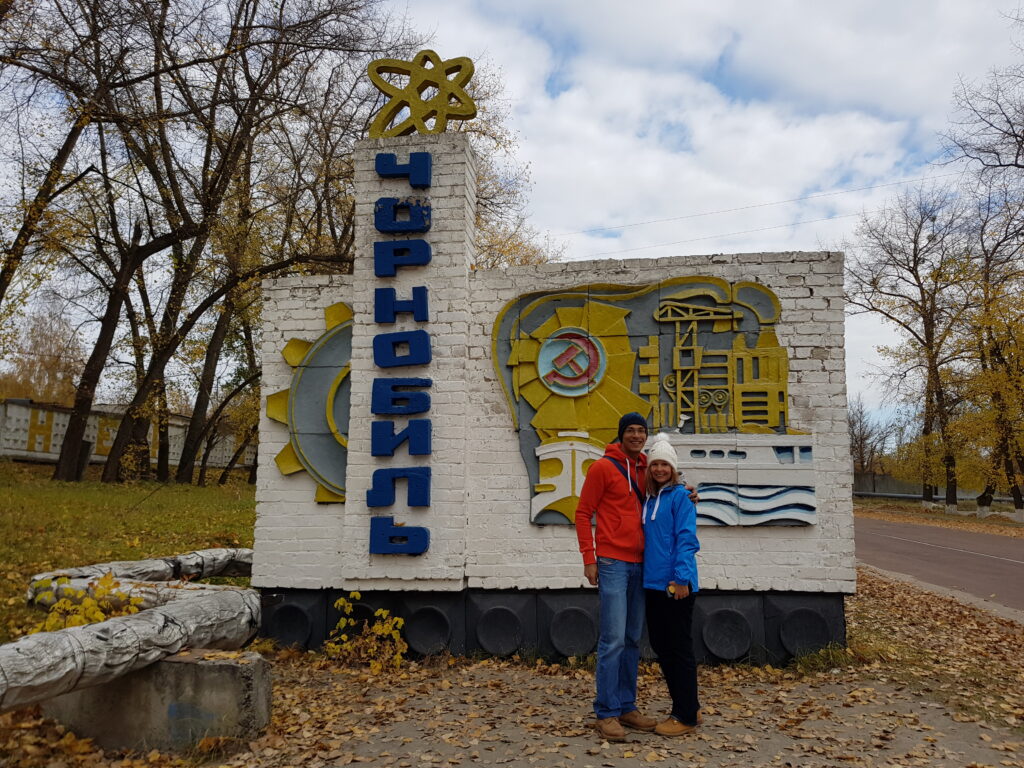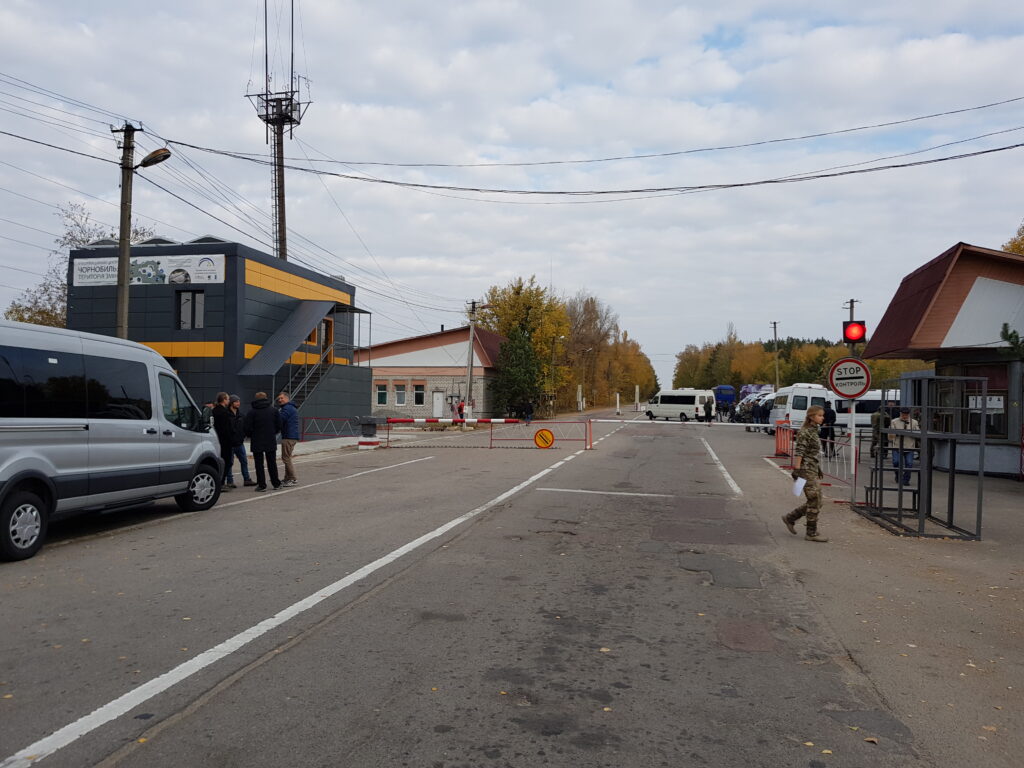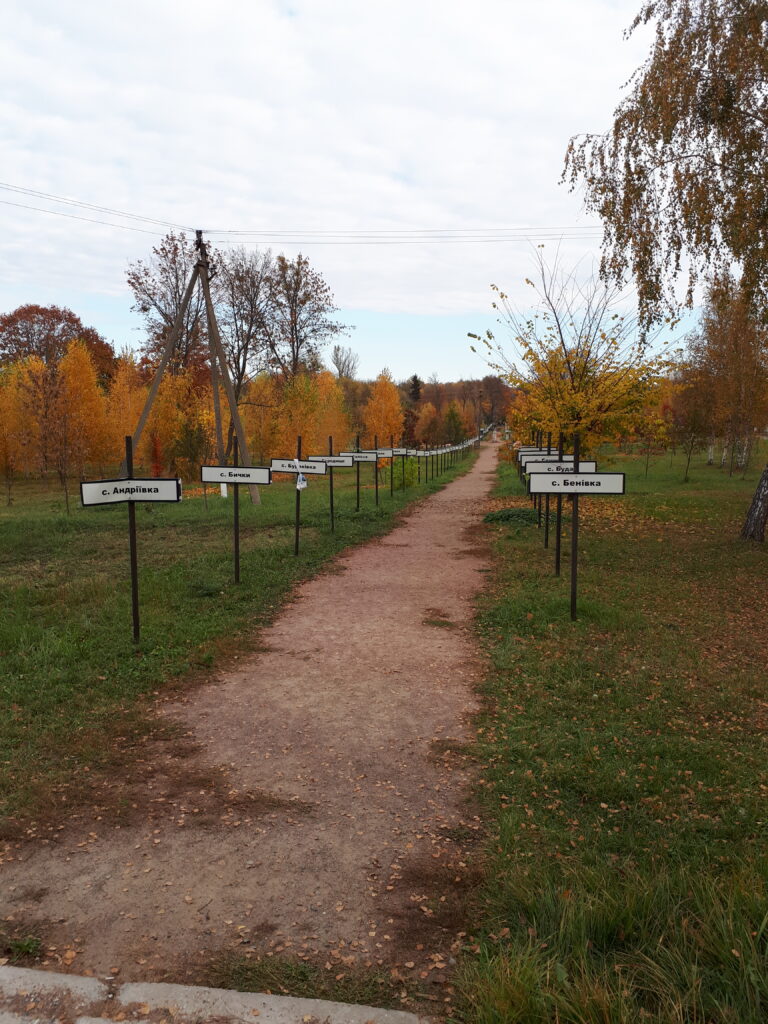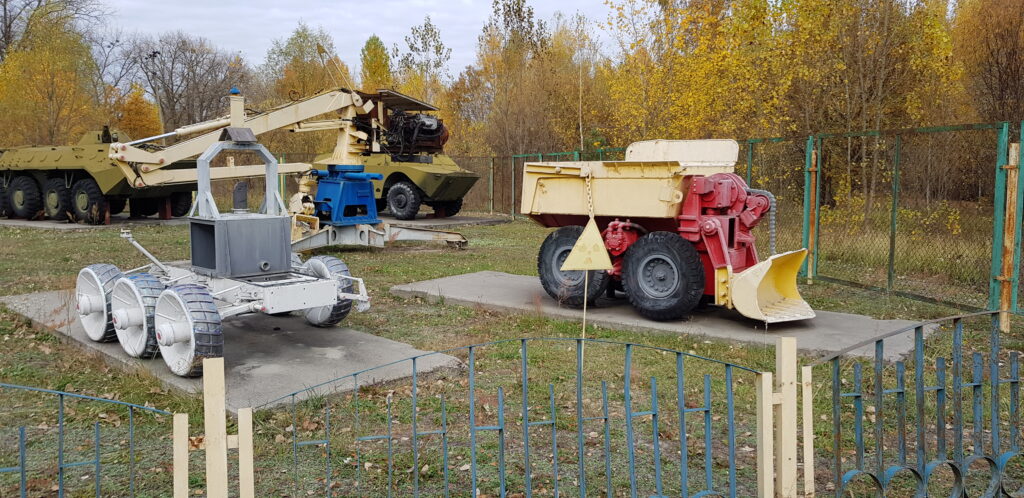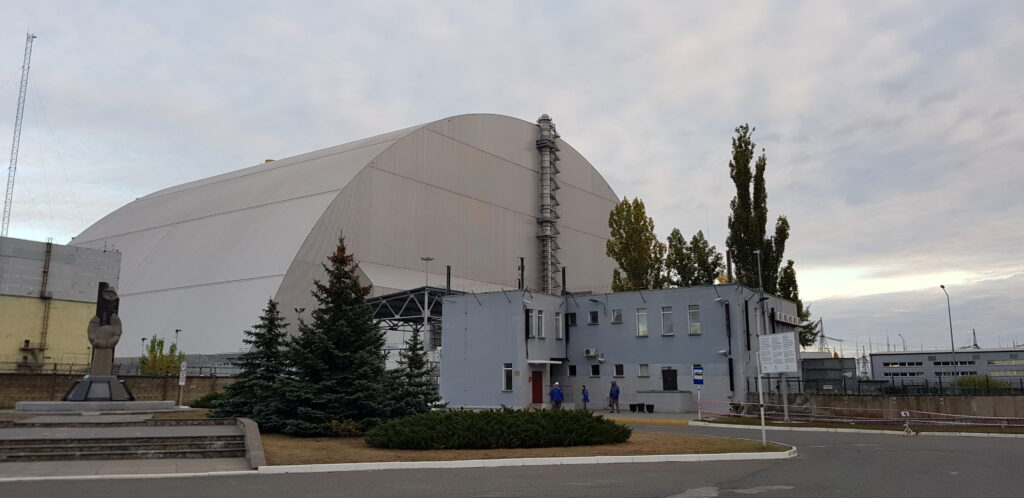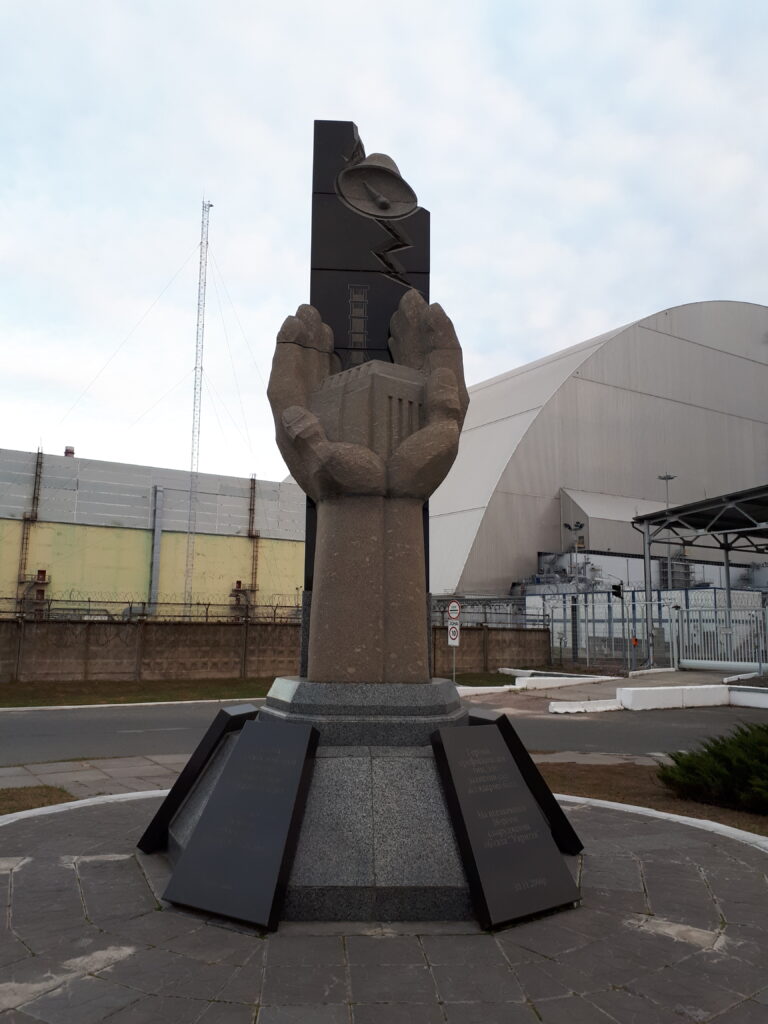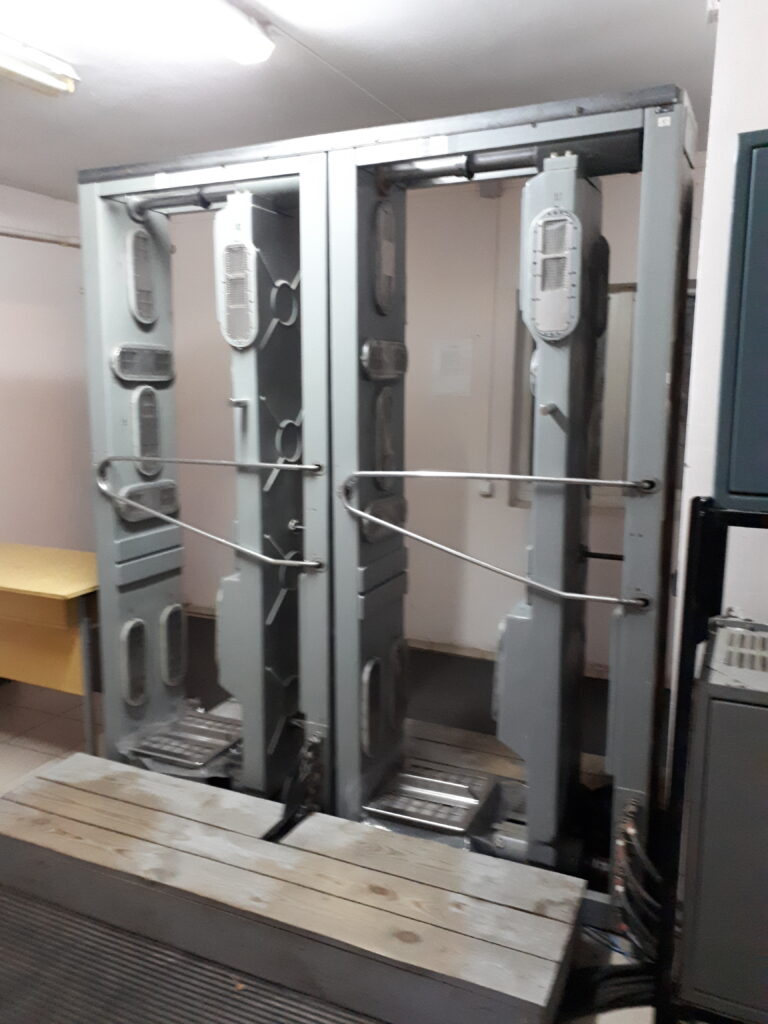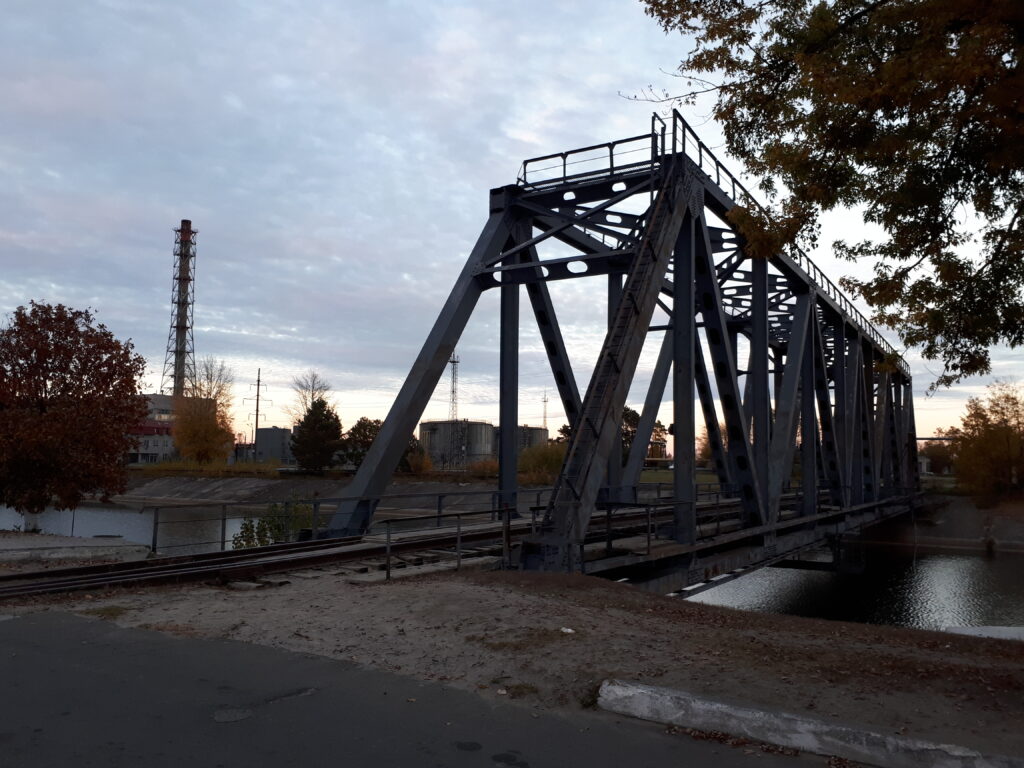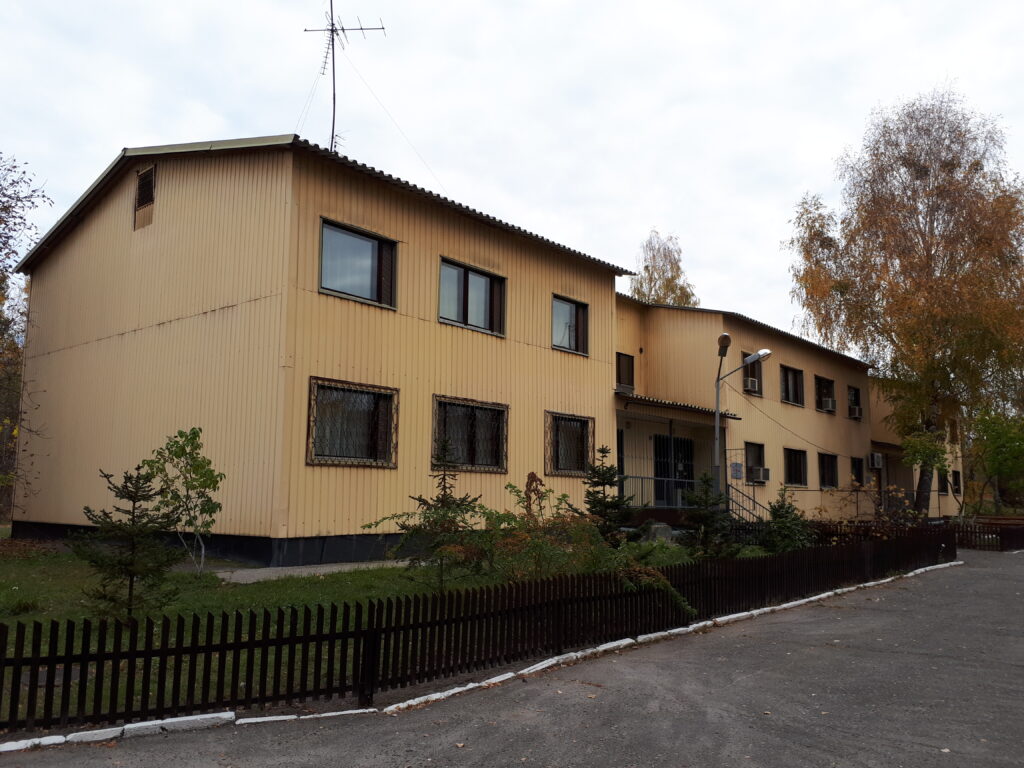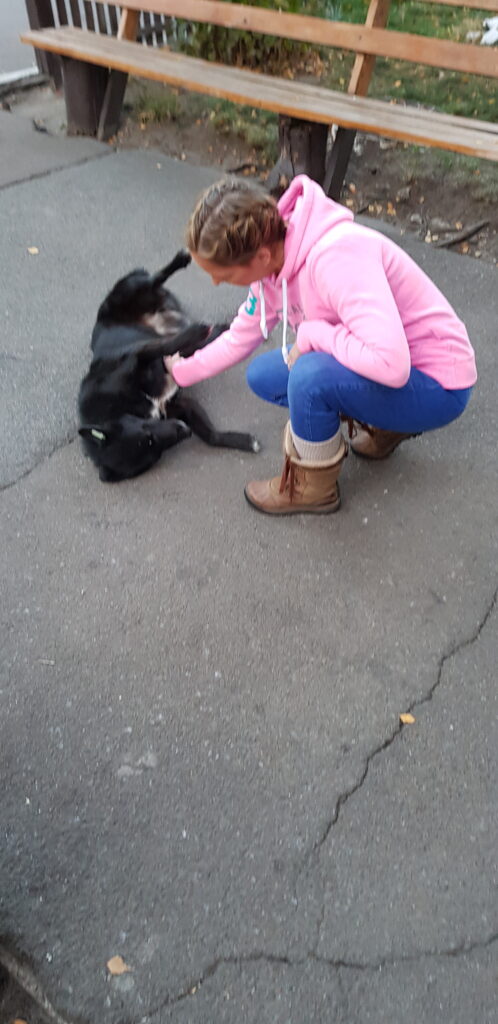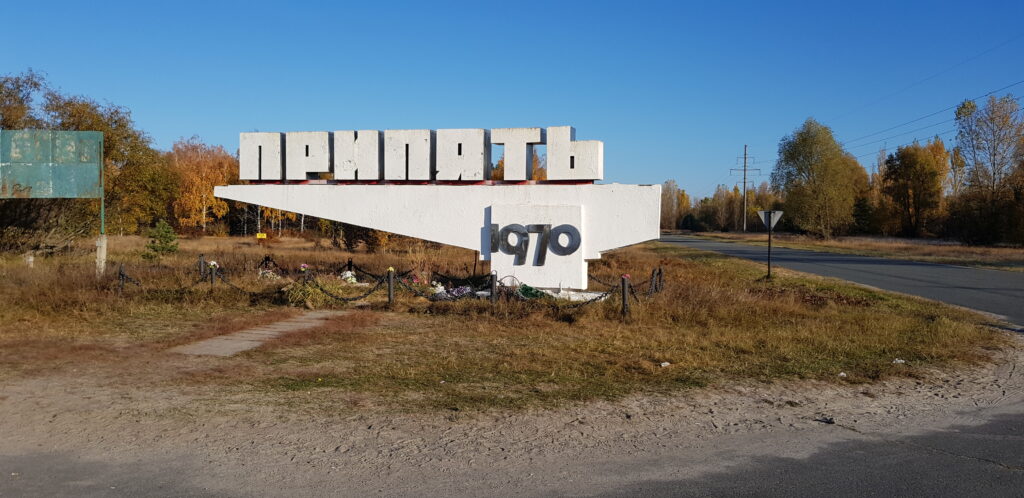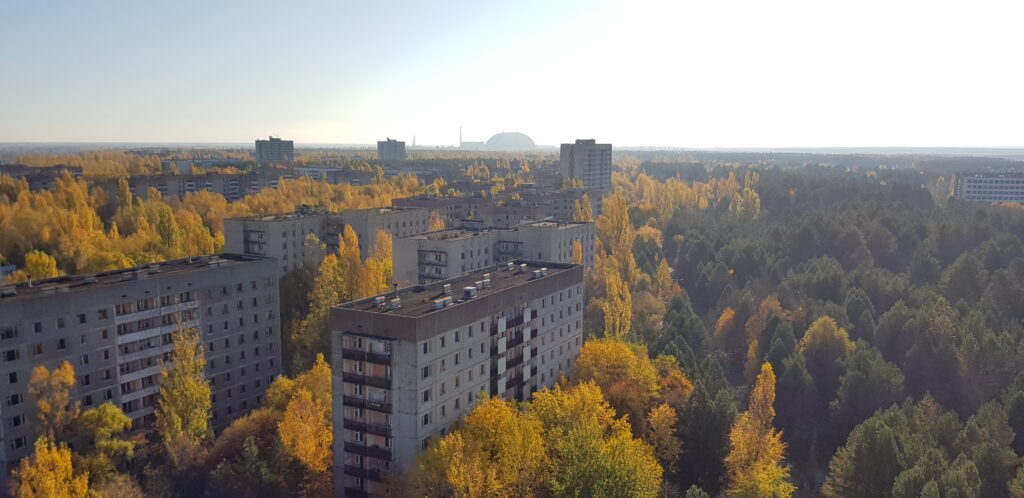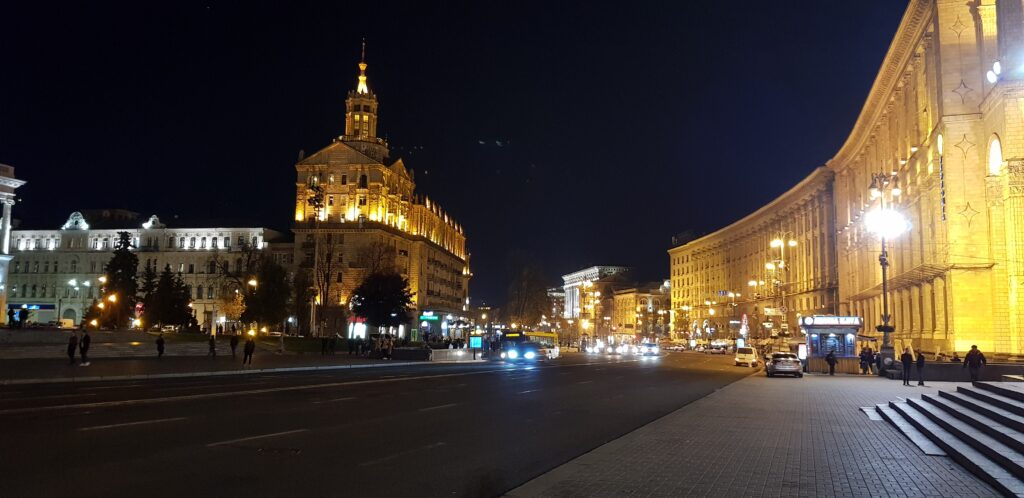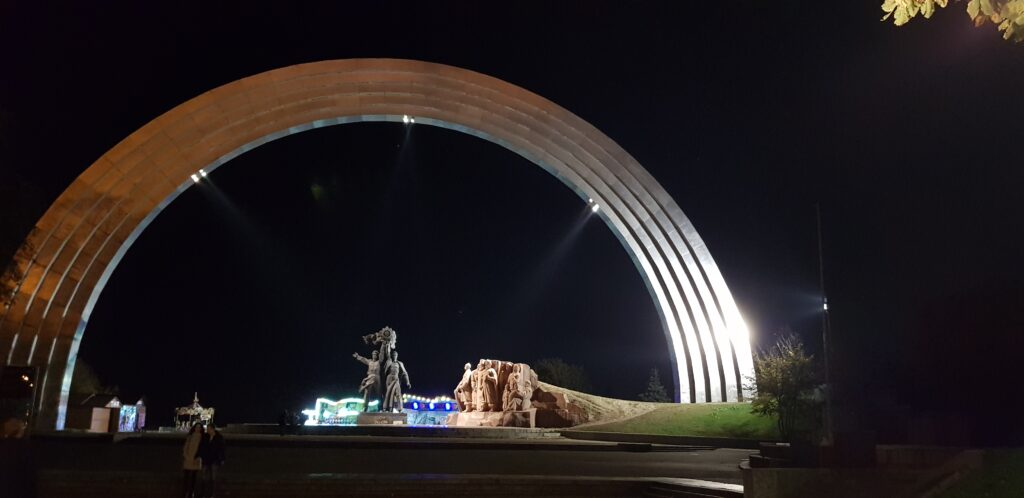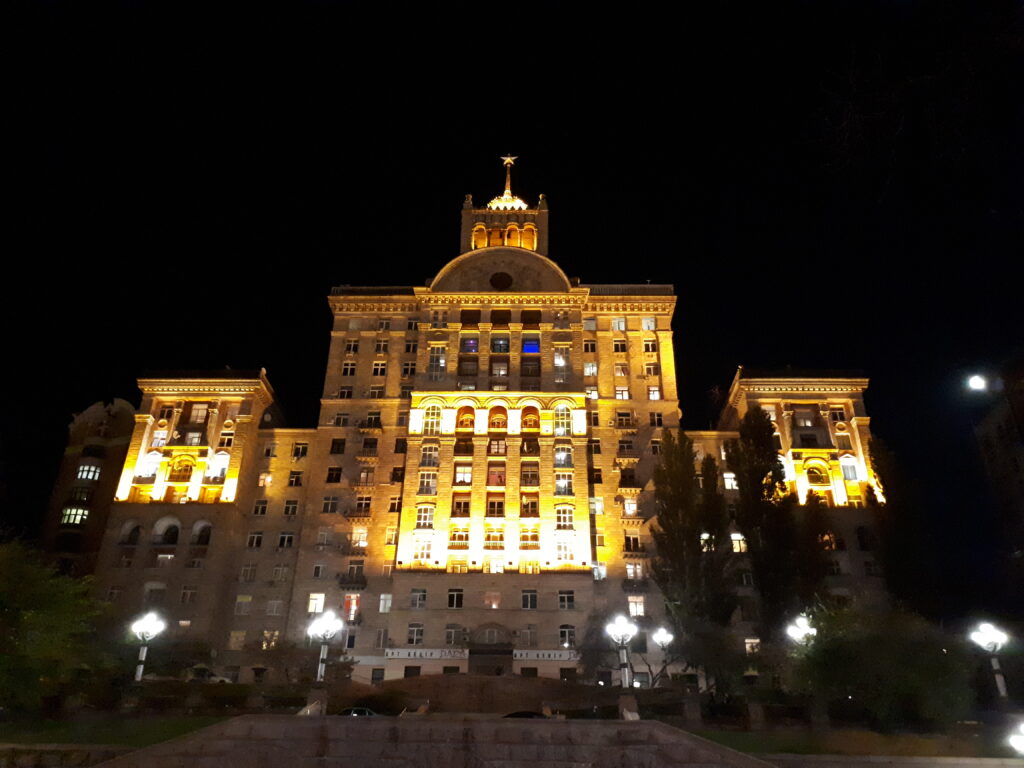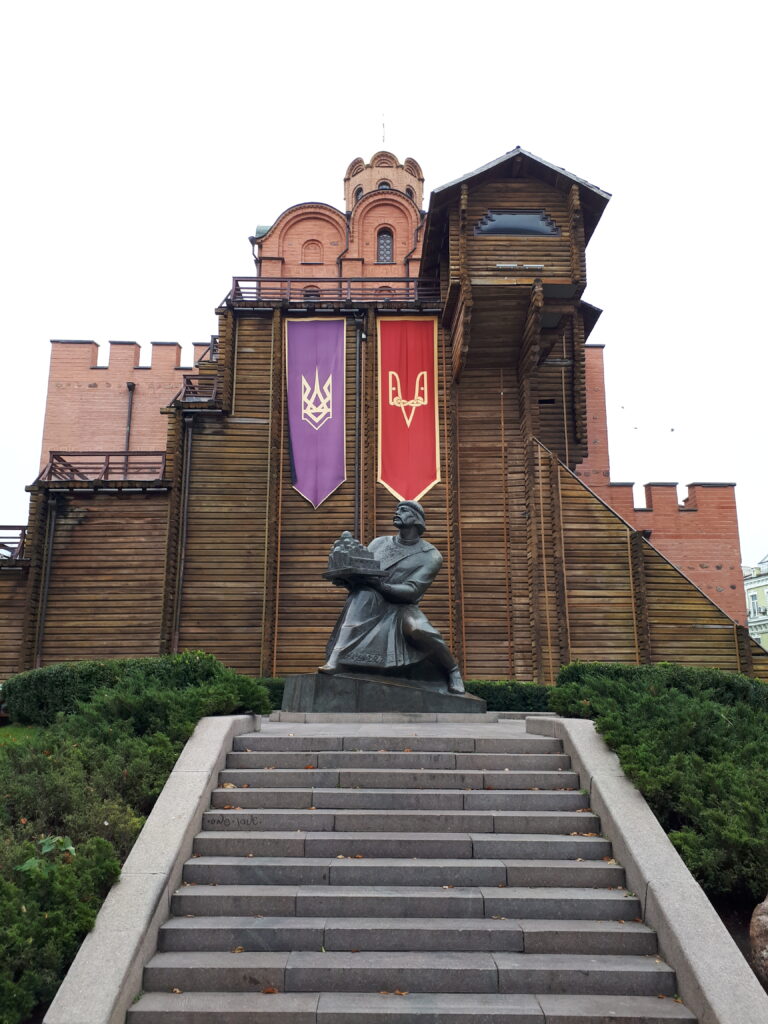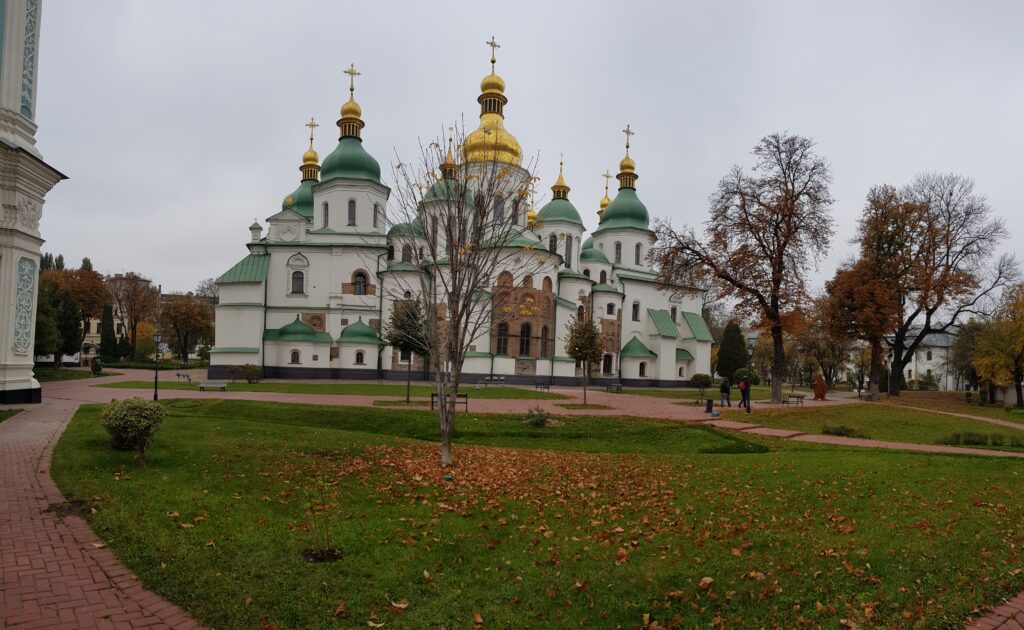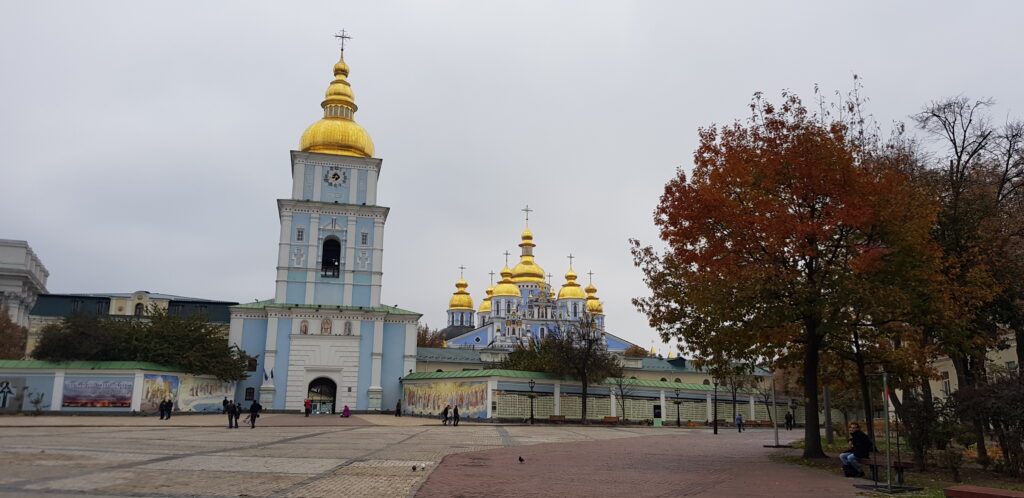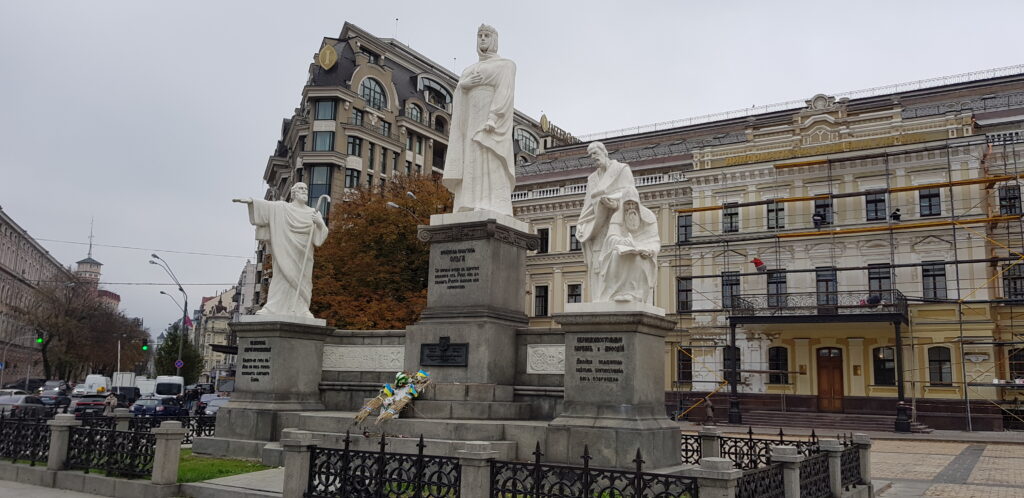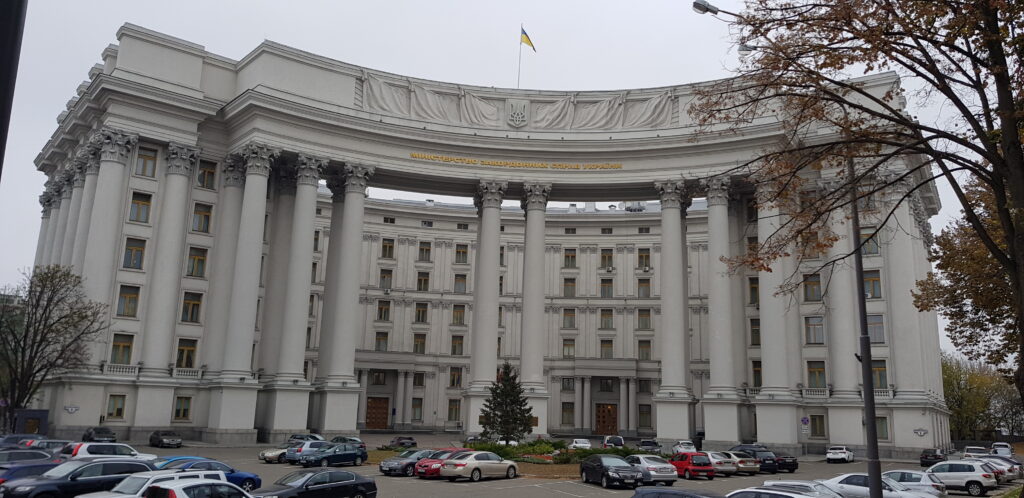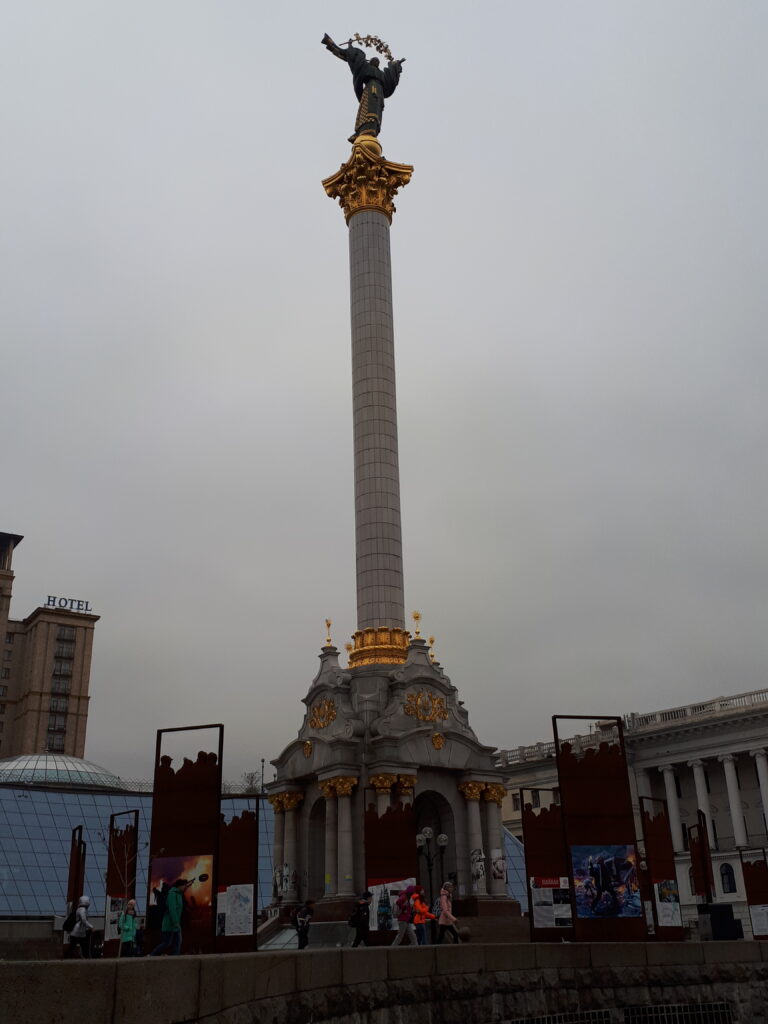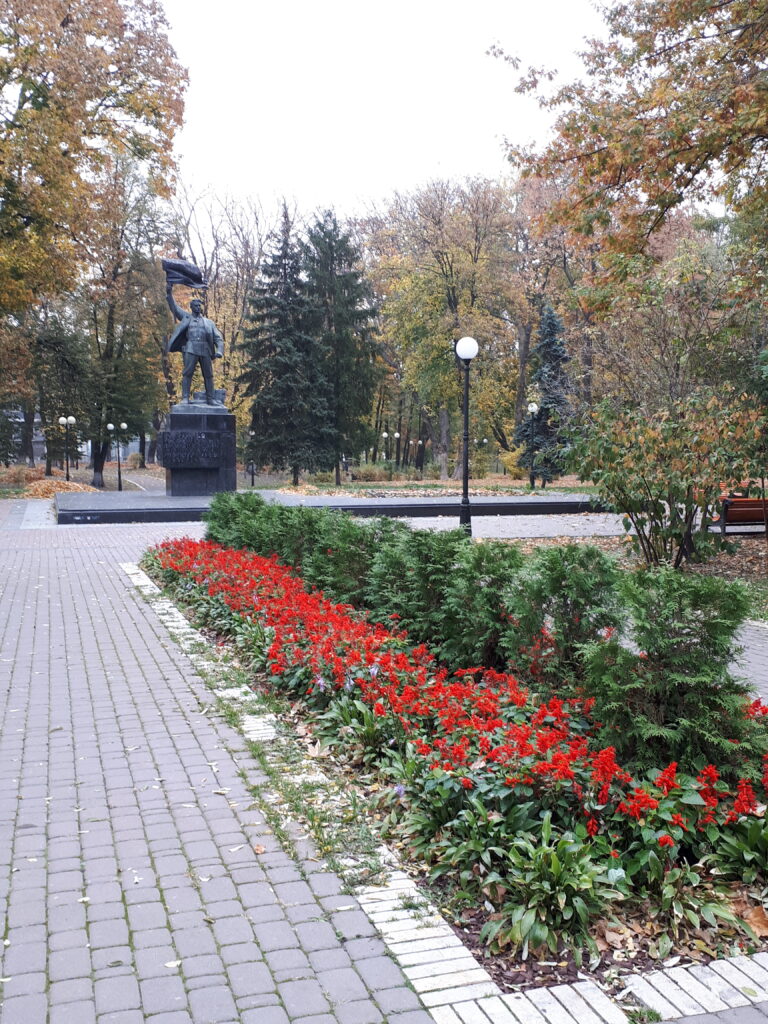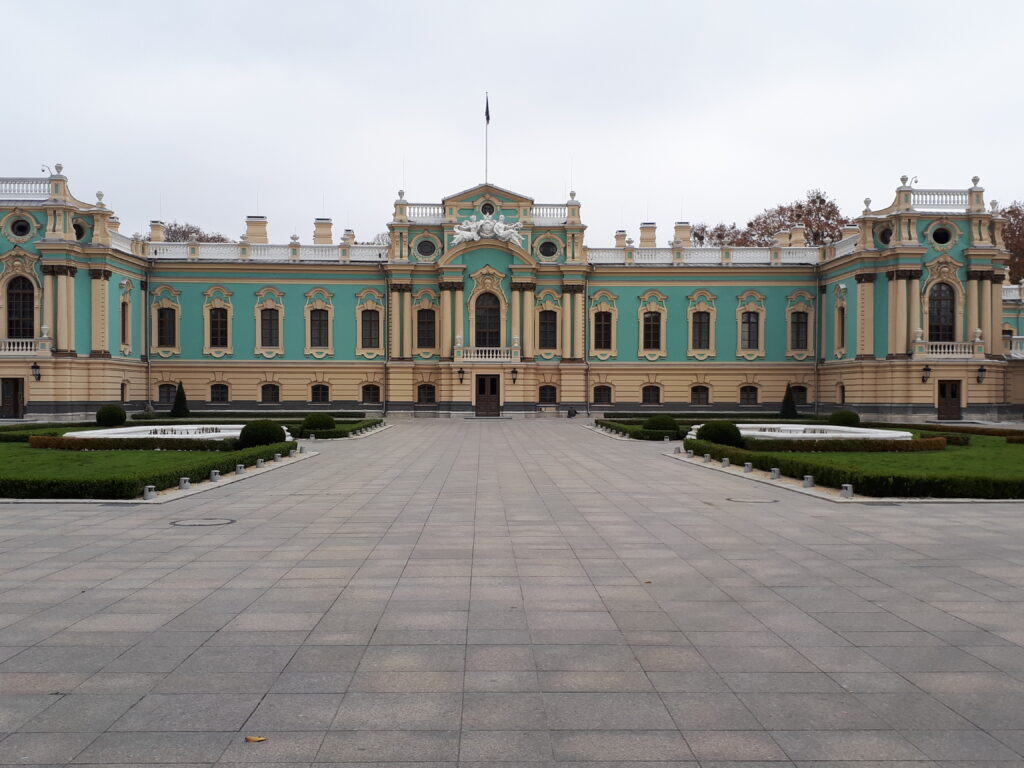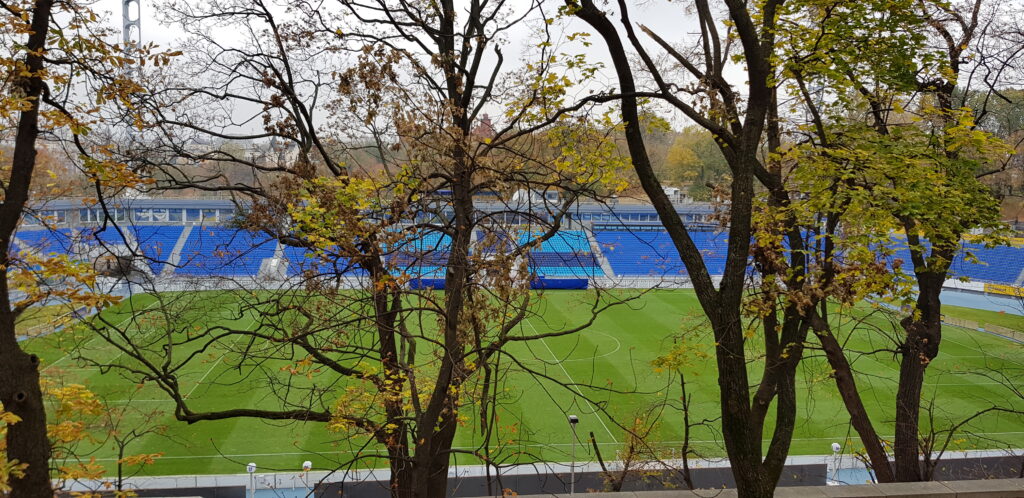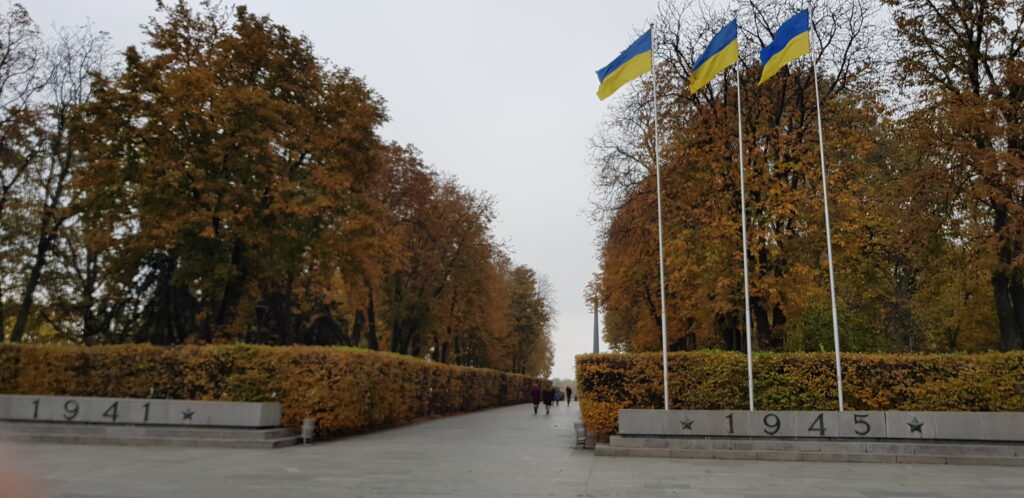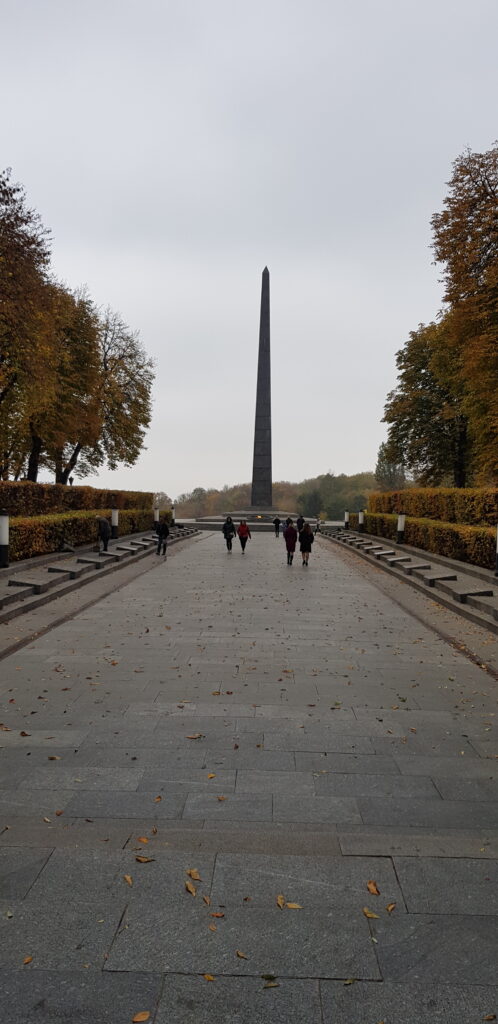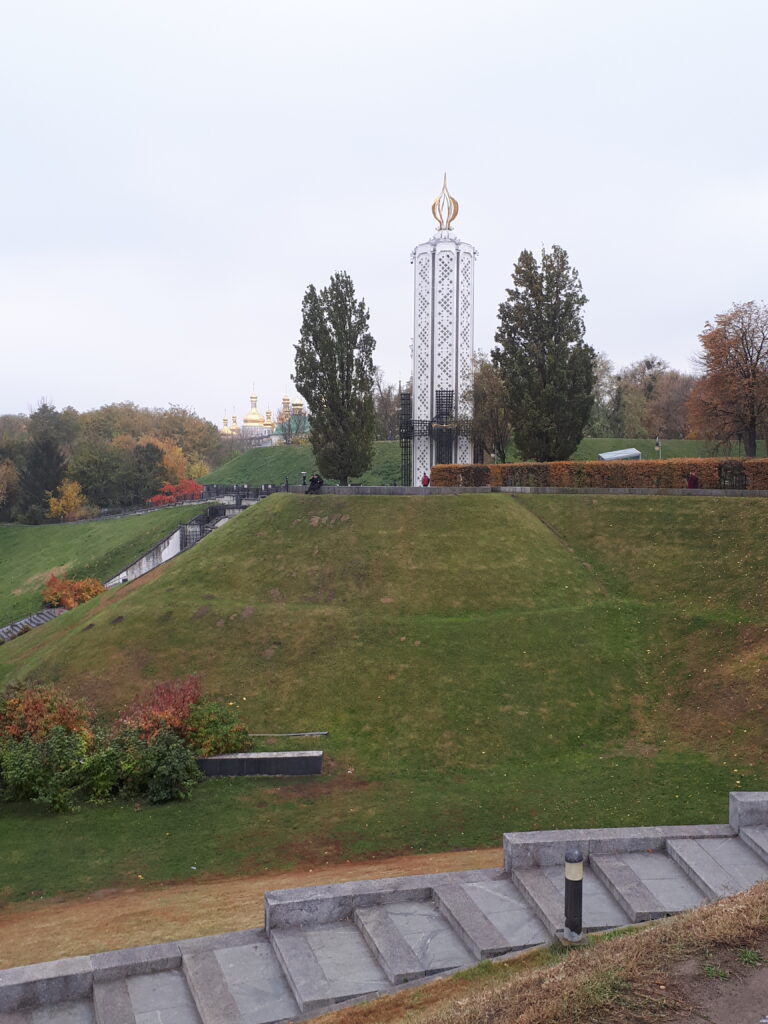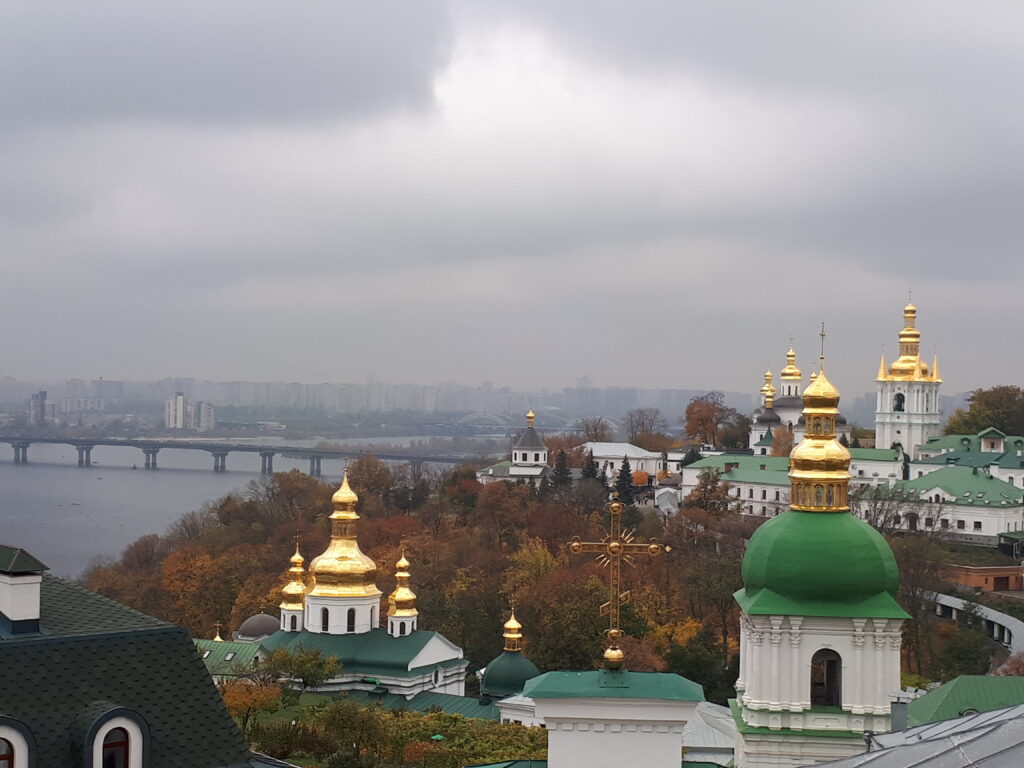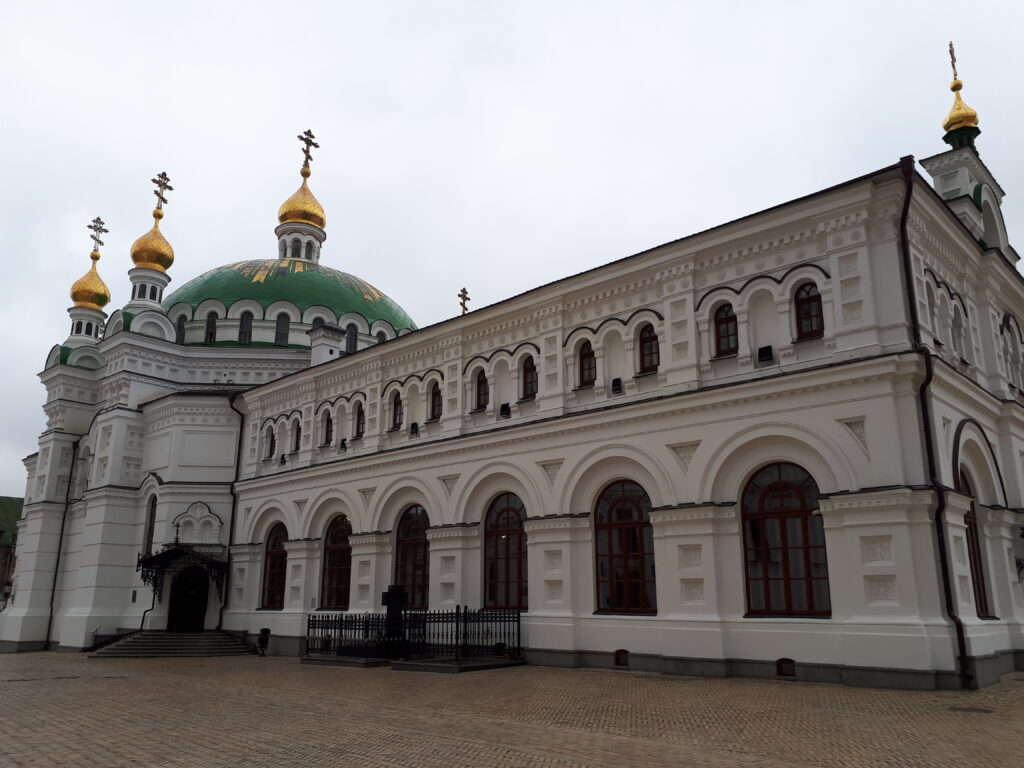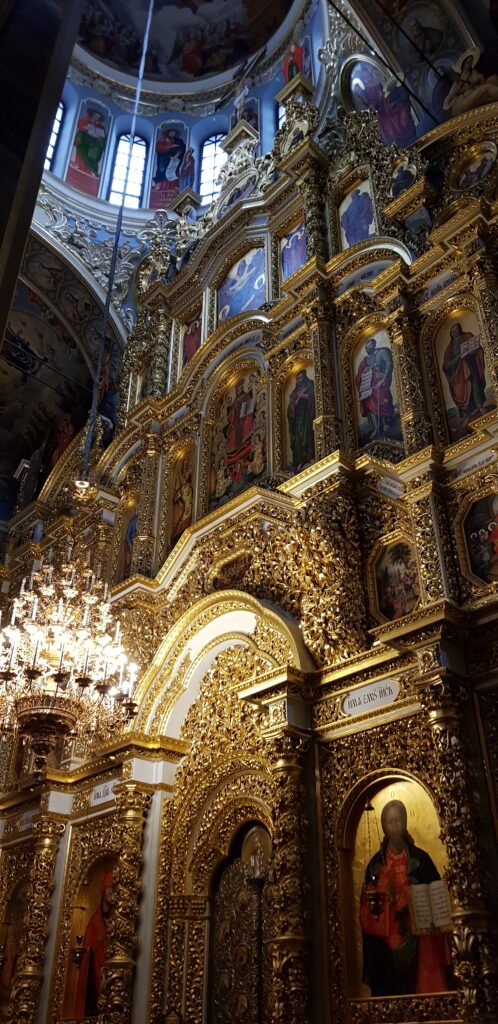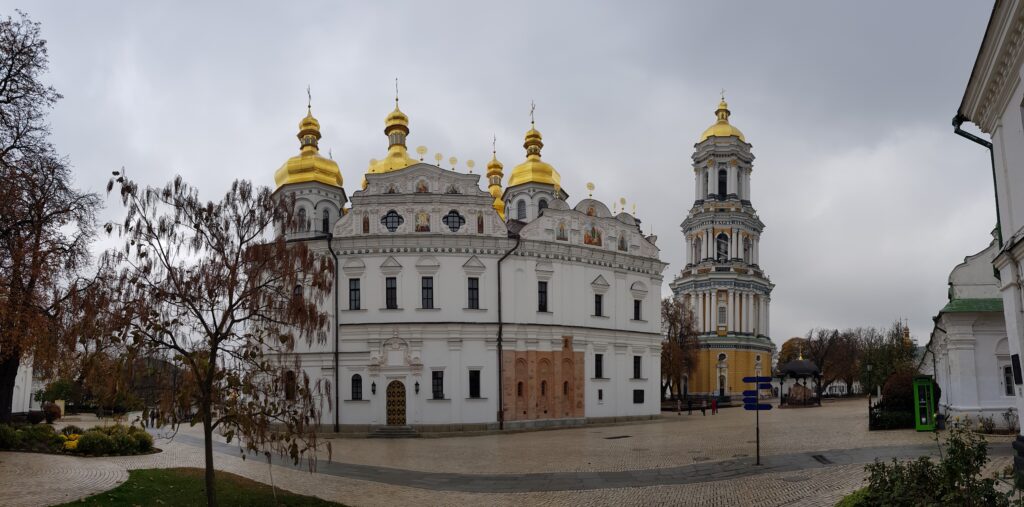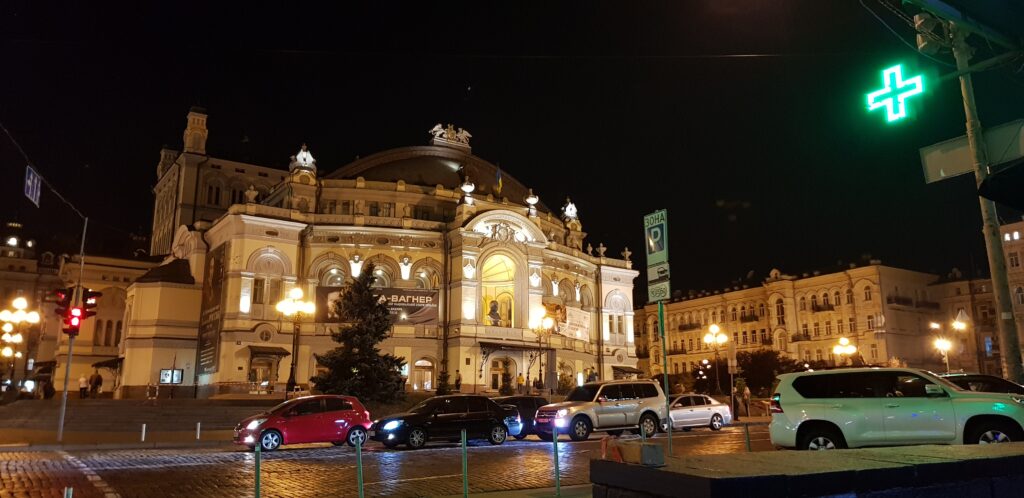Ukraine – October 2018 (by Luke, April 2024)
I quite often find the news a prompt to reminisce about a trip. This has never happened as often as it has with Ukraine. We had such a good time exploring Chernobyl and Kyiv on our trip to Ukraine in October 2018! It was just a short break with the main aim of seeing Chernobyl. I’ve always been a bit of a geek and seeing the exclusion zone up close had been on my bucket list for ages!
Every time there are aerial pictures of Kyiv in the news it brings back memories. Life must have changed so much for the Ukrainians that we met whilst out there.
day one
From the airport our taxi fought through the traffic and dropped us at our hotel in central Kyiv. We dropped off our bags and set off on a walk. Even in the middle of the afternoon Kyiv was a busy place, hustle and bustle but not a care in the world. This must be a world of difference to how the city is now. It felt like we walked for hours. We went into various parks, saw trams and loads of other infrastructure which was a real blend of modern and from the old Soviet times.
It’s always nice to have a walk when you first arrive somewhere to find your bearings but this was two-fold. We ended up walking to where we needed to be the following morning. It’s always good to be prepared, to work out timings etc. During the walk we stopped in a shop to buy snacks and a drink. This was one of the first places that we’d been where even Gill struggled with the language! With some pointing and gestures we were soon on the way with pretty much what we wanted.
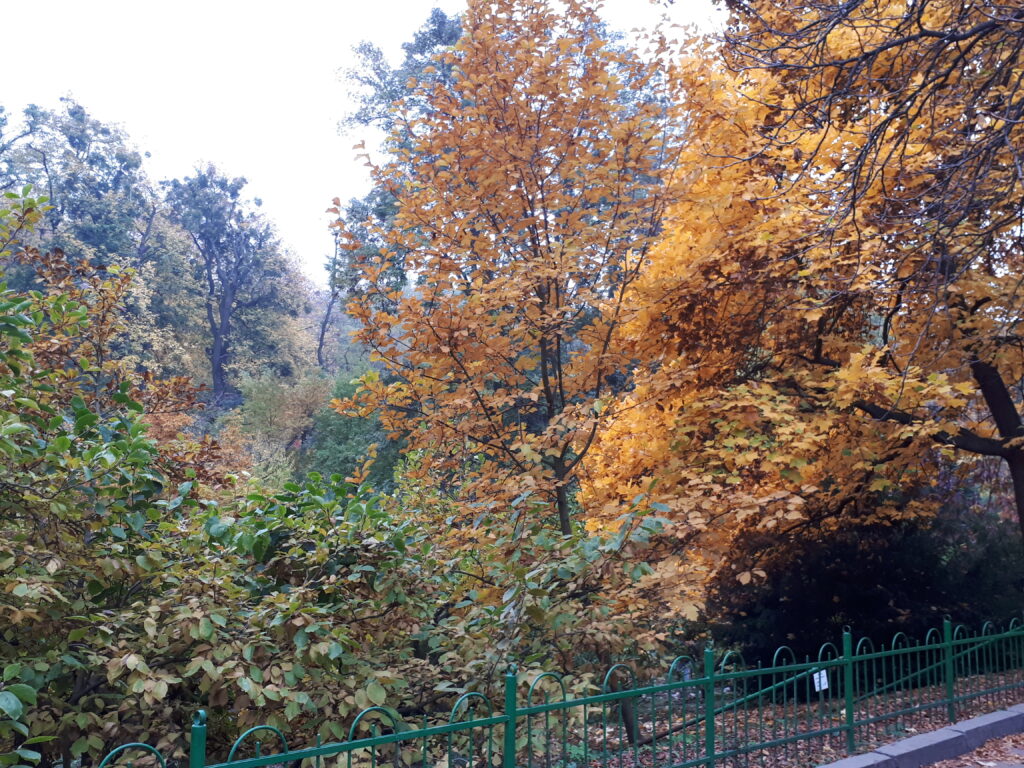
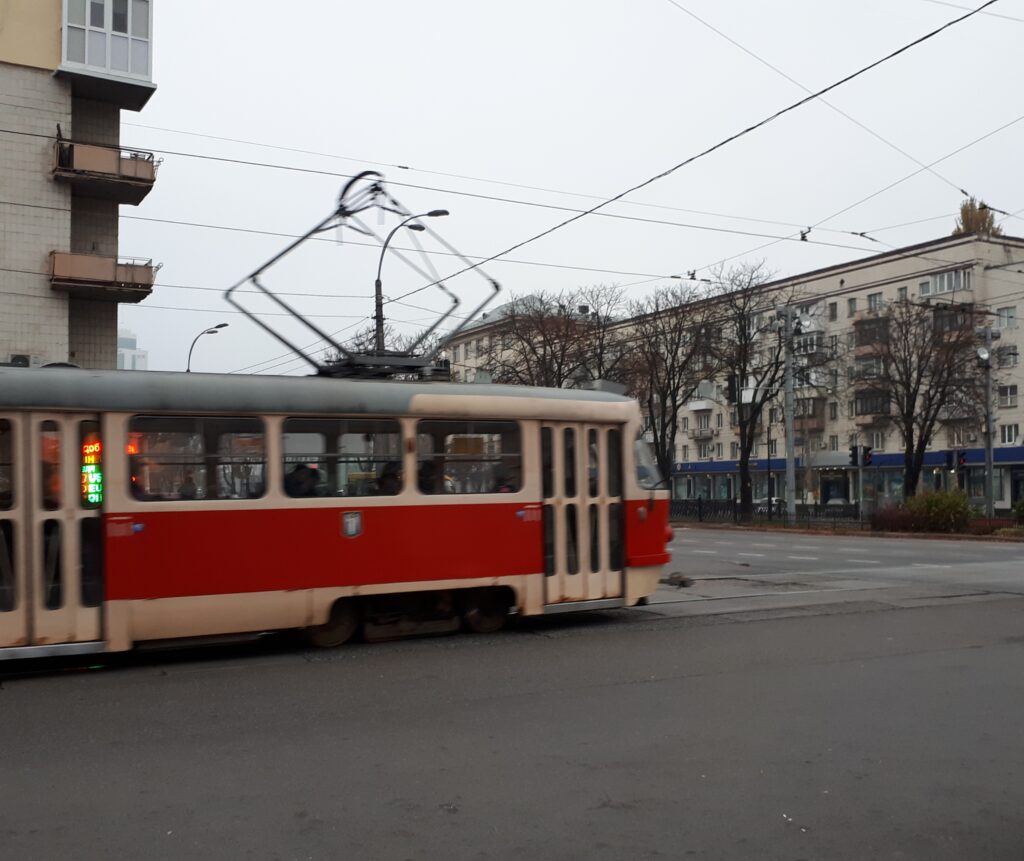
We ate at a really memorable restaurant called Barvy that first night. They had a full complement of cocktails that paired with the food and brought out elements that you wouldn’t usually taste. It was very different as a concept but it really worked. I stuck with tradition and had a chicken kyiv amongst other dishes. Despite everything going on in Ukraine, Barvy is still open and serving the ‘best modern Ukrainian cuisine in Kiev’ according to a recent review on TripAdvisor!
One thing that also really sticks in the memory is that the streets were almost unbelievably busy at night when walking back to the hotel. There were so many people everywhere!
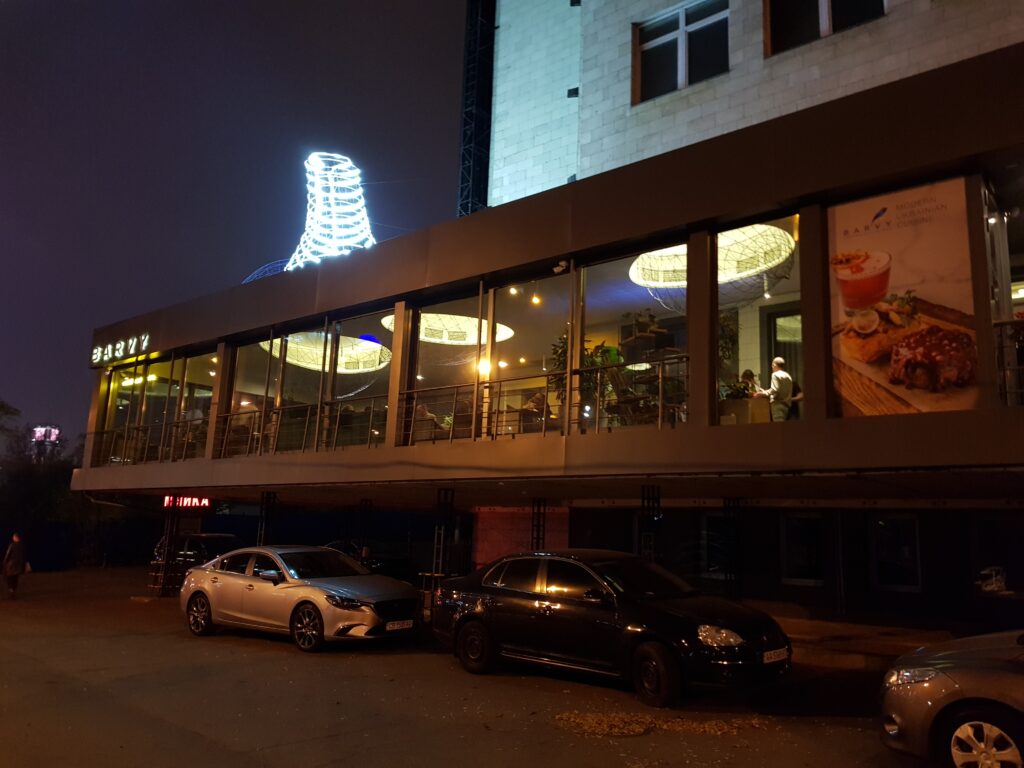

day two – exploring the Chernobyl exclusion zone
Our alarms woke us up bright and early the next day for collection from Kyiv Pasazhyrski station for the minibus trip north towards Chernobyl. The journey was around 150km and pretty much all of it was alongside and around the Kyiv Reservoir. The reservoir is massive, we barely saw it after leaving Kyiv but knew it was there. Formed by damming the Dnipro river just north of Kyiv this reservoir feeds a hydroelectric power plant.
Just a quick note – the power plant being known as Chernobyl is due to it being opened/named when Ukraine was still part of the Soviet Union and spoke Russian as a second language. Chornobyl (the town/city) is the Ukrainian spelling of the same word.
After a bit of a drive we arrived at the first checkpoint where we entered the Chernobyl Exclusion Zone. It was at this point that we were issued with our Geiger counters and that it all got real!! The highlight of the first day was seeing the Duga Radar Array (more to follow on that shortly). On the way we got to explore some abandoned villages as well as go to Chornobyl Town. Inside Chornobyl town we saw memorials to the villages lost to the exclusion zones as well as a 3d map of the exclusion zones.
The journey was punctuated by stops to see interesting items. One of these was a display of equipment that was mostly still highly radioactive. These items had been used to attempt to clear the site at Chernobyl. Equipment to do this never existed prior to the disaster so them being invented at such short notice was, according to our guide, ‘a testament to Soviet ingenuity, to deal with Soviet issues’!
Arriving at the Duga Radar Array was pretty spectacular. We entered through some grand, imposing gates adorned with a silver Soviet star, turned a corner and then it was there…everywhere we looked… it is massive!! Duga was a two-part over the horizon radar that was part of the Soviet Union’s early warning radar network. It was nicknamed the ‘Russian Woodpecker’ when in use due to the interference it caused with radios across the world. This part (the receiver) is 700m long and 150m high.
Duga stopped operating in 1989, possibly superseded by satellites which were much more efficient at detecting missile launches. It was one of the most amazing man-made structures I’ve ever seen. The size and engineering behind it was remarkable especially when you think that it was older than me. In order to ‘see’ over the horizon the system had to bounce signals off the ionosphere (between 80 and 600km up) and then receive them as they came back to earth. This needed a huge amount of power and is why it was built so close to Chernobyl (even though the power plant at Chernobyl was only a plan at the time Duga was commissioned).
We were able to explore the buildings that would have housed the 1000+ troops that were based at Duga. Further into the site we saw the control equipment. Some of this was still in situ with the remainder strewn around the site. Even after all these years it was still recognisable – maybe we’d seen similar in films growing up? These buildings were on a vast scale that pictures just don’t do justice. All were in various states of disrepair as you’d imagine with being unused for nearly 30 years.
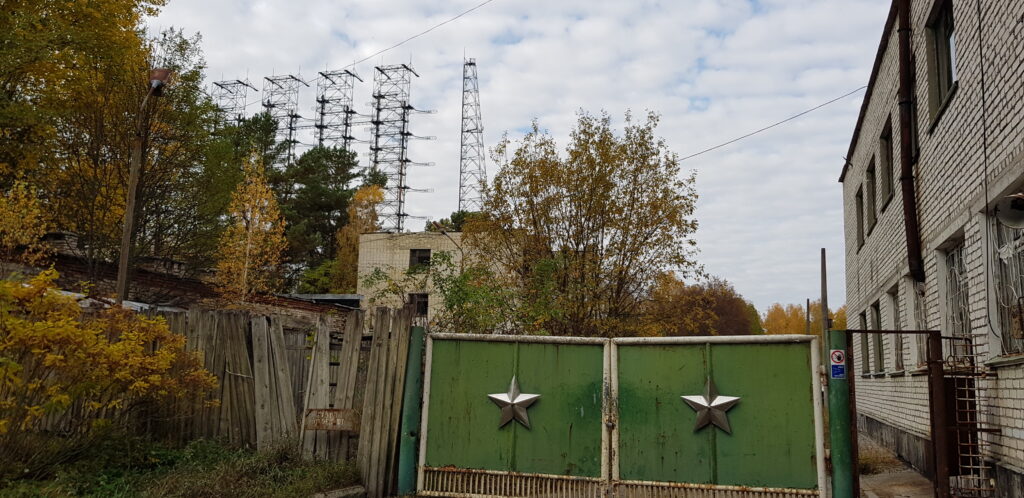
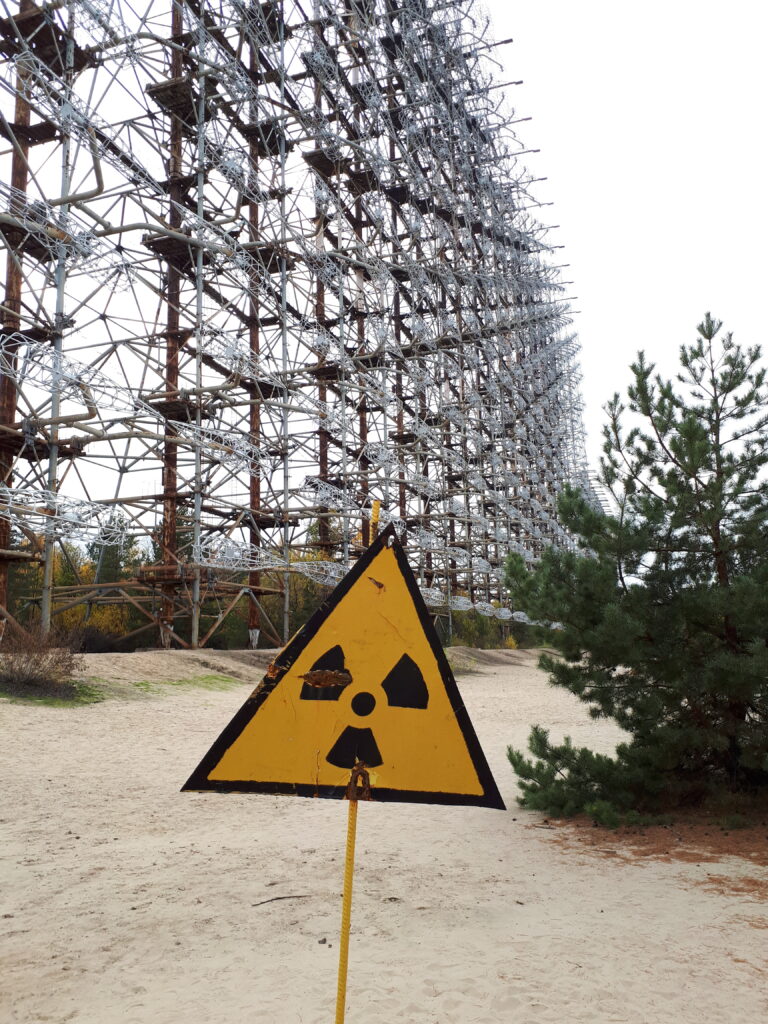
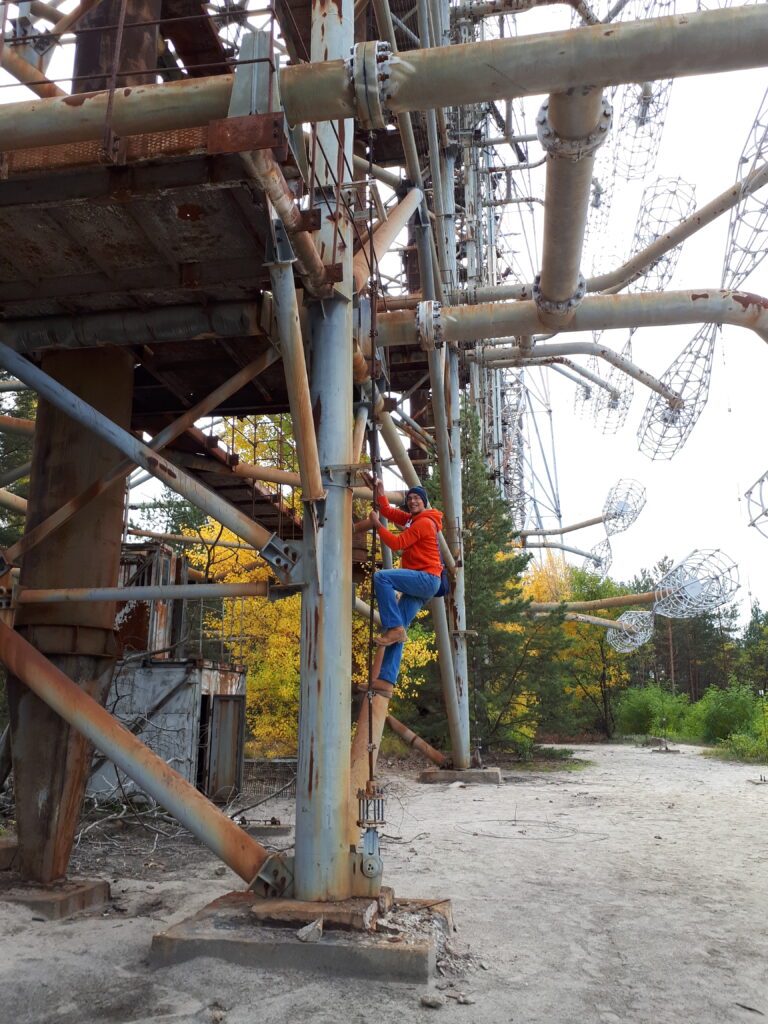
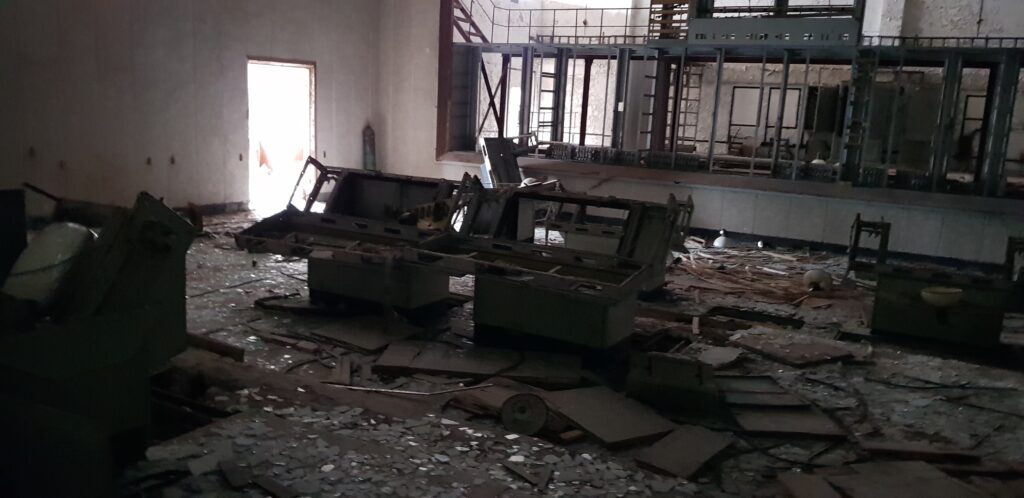
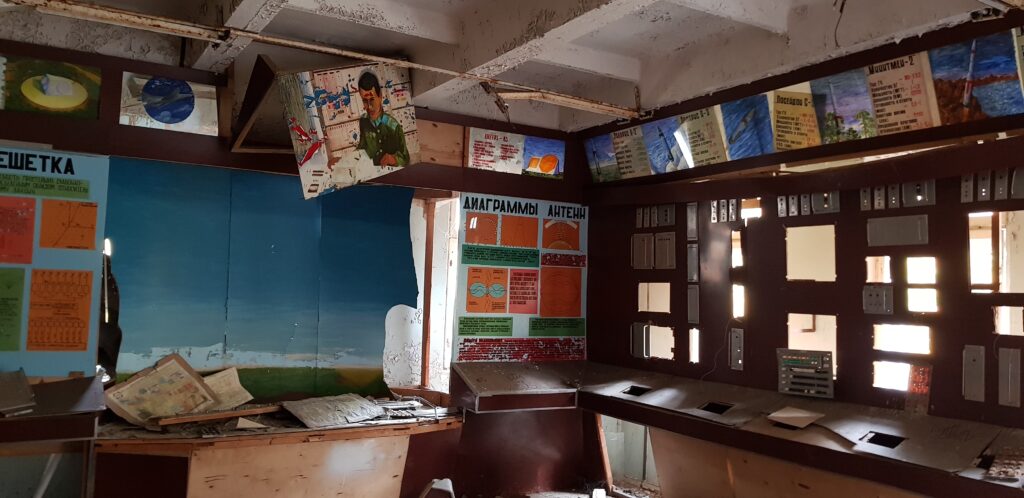
After Duga we did a little more exploring including seeing a school which was hurriedly evacuated before getting our first view of Chernobyl itself…then getting closer and closer until we were in the shadow of the sarcophagus!!
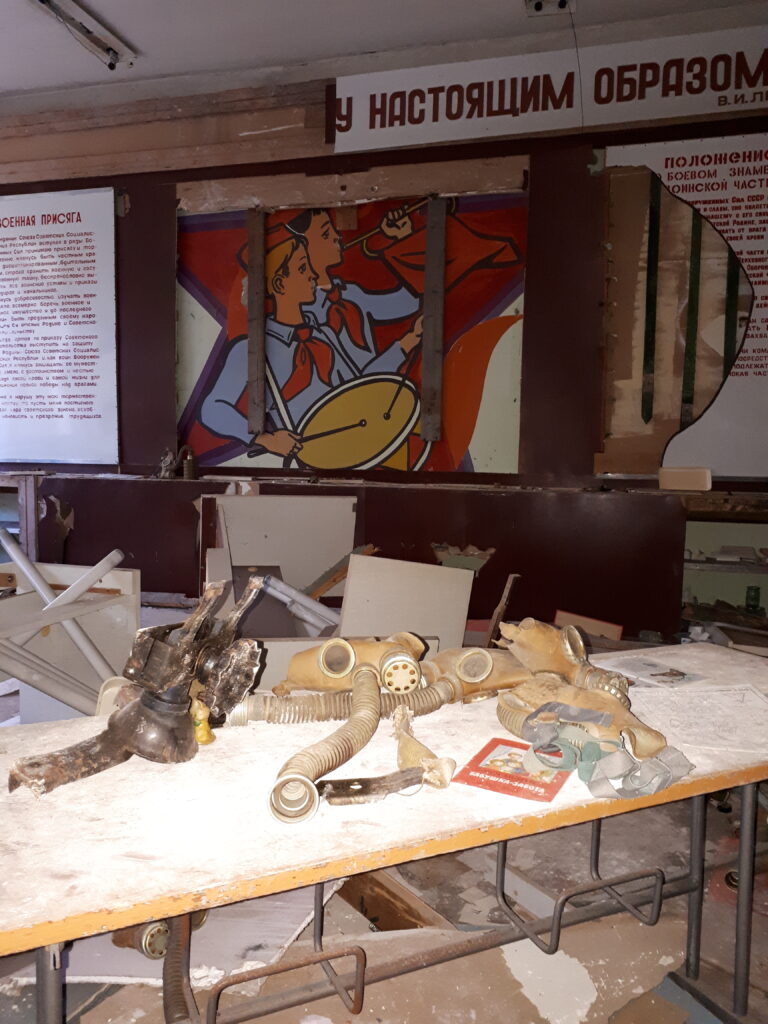
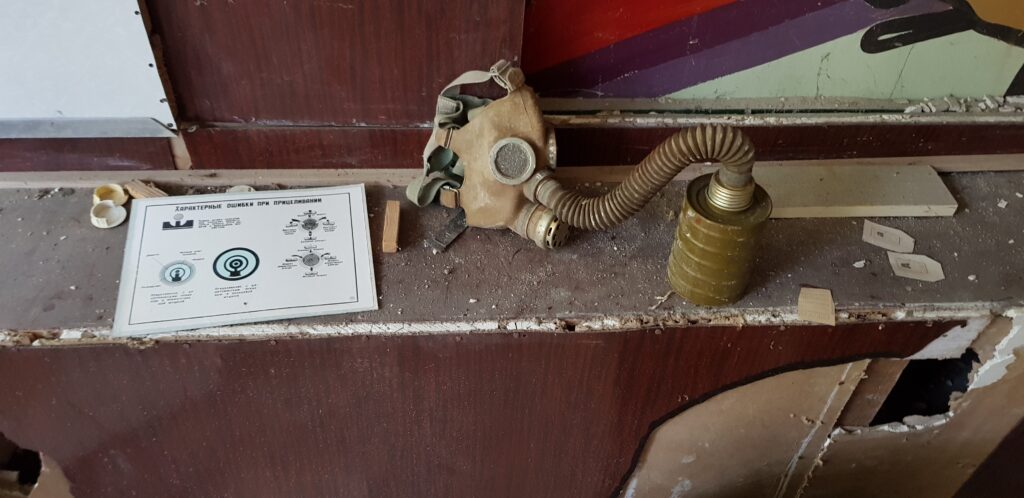
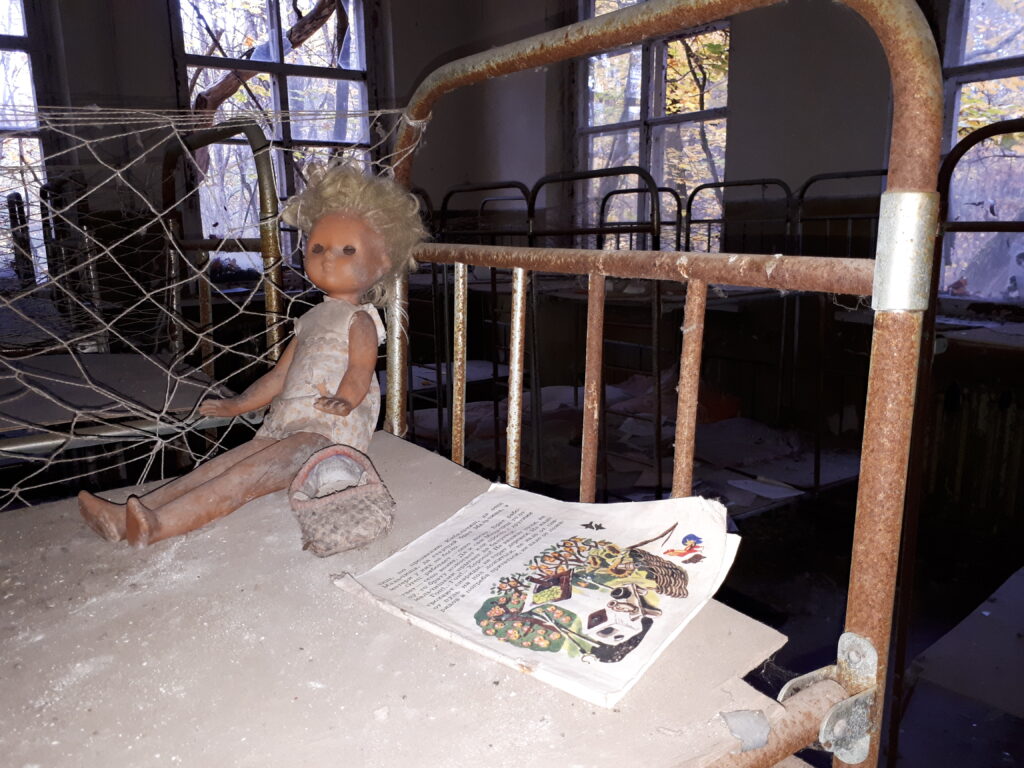
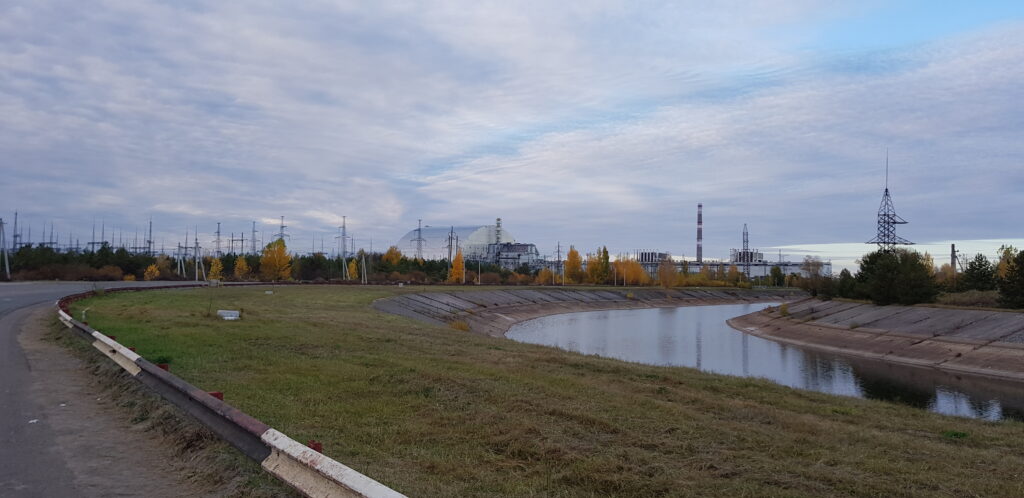
The sarcophagus, or ‘new safe confinement’ to give it its proper name was installed at the end of 2016. It weighs 35,000 tonnes and was moved into position on rails. The new safe confinement is huge…the largest single object that humans have ever moved. It is taller than the Statue of Liberty and larger than Wembley Stadium. Designed to last 100 years it has facilitated the safe removal of the original sarcophagus that was hastily installed in the years after the disaster. In total over 40 countries contributed to funding the new safe confinement. The total cost for this element of the broader ‘shelter implementation plan’ is $1.7 billion!
On 26th April 1986 reactor number four at the Chernobyl Nuclear Power Plant exploded during a routine stress test. The resulting fire led to super-heated nuclear fuel melting into the basement below the containment shell of the reactor. This burning reactor core released radioactive isotopes into the atmosphere which affected a large part of Europe.
The initial fire and subsequent meltdown was kept quiet by the Soviet government until it couldn’t be any longer. This time came when sensors across Europe started to pick up the increase in radiation. Teams of people (often with minimal training and substandard equipment) were sent to clean up the site. The first task was to put out the fires around the power plant – this in itself took 9 days. These teams came to be known as ‘liquidators’ and had to deal with insanely high doses of radiation in order to try to make the site safe. They often only had rudimentary ‘protection’ such as a handkerchief across their face!
In total around a million people were brought in from across the Soviet Union to help with the clean-up and containment. No one knows exactly how many but it is thought that thousands of liquidators died while conducting their work. Most survivors suffered horrendous long term illness from the effects of prolonged radiation exposure. The liquidators were heroes and prevented a much larger catastrophe by limiting the melt down to reactor 4. Without their actions the remainder of the reactors could have exploded and harmed hundreds of thousands of people across Europe.
We spent some time at the site and even ate in the worker’s canteen! When we visited there were a multitude of workers at Chernobyl, responsible for keeping the site safe.
After food we made our way through the radiation scanner and headed to our hotel in Chornobyl Town for the night. There were a few places that we had to be radiation scanned to depart from. I’m not really sure what would have happened if we hadn’t met the criteria…luckily we didn’t have to find out!
day three – discovering Pripyat
I still remember this as one of the best nights sleep ever! Maybe it was the exploring we did the day before, the cold (the hotel was basic, but really comfortable…it definitely wasn’t warm though!), the quiet, or the radiation in the air but whatever it was it definitely worked for me!! After breakfast we left Hotel Desiatka and set off to explore the once cosmopolitan city of Pripyat!
Pripyat – what a Soviet city should have been. Built especially for the workers of Chernobyl power plant and their families this ‘atomgrad’ (atomic city), it had a population of approx. 50,000 before the disaster. People moved from other cities to be here for the clean country air, the department stores, the cinema, the indoor swimming pool and more. Pripyat ticked all the boxes!! There was even a football team, FC Stroitel, and a fun fair that was soon to be opened.
Chernobyl was only 3km away which made commuting easy. The close proximity made the town on the frontline for radiation when reactor number four exploded. The residents were not evacuated immediately but had to wait until around 36 hours after the explosion to be bussed to their new lives. During the subsequent weeks and months following the disaster an additional 67,000 people were evacuated from their homes in surrounding contaminated areas and relocated on the orders of the Government.
The majority of the day was spent in Pripyat. Seeing a once thriving city that was eerily quiet and in the process of being reclaimed by nature was quite surreal! The day started on the roof of a tower block to understand close the plant really was to the city. We really got an idea of how hurried the evacuation was by looking at the items that were left behind. After this we walked around Pripyat and saw a school, the stadium, the iconic Ferris wheel, the swimming pool and multiple irradiated vehicles.
Finally we saw the hydraulic claw that was used to remove material from the plant after the disaster (this was the highest reading that I managed to find on the Geiger counter at just under 100 microsievert/hour), a bulldozer that was used to move irradiated material and some abandoned farming machinery before we set off back to Kyiv.
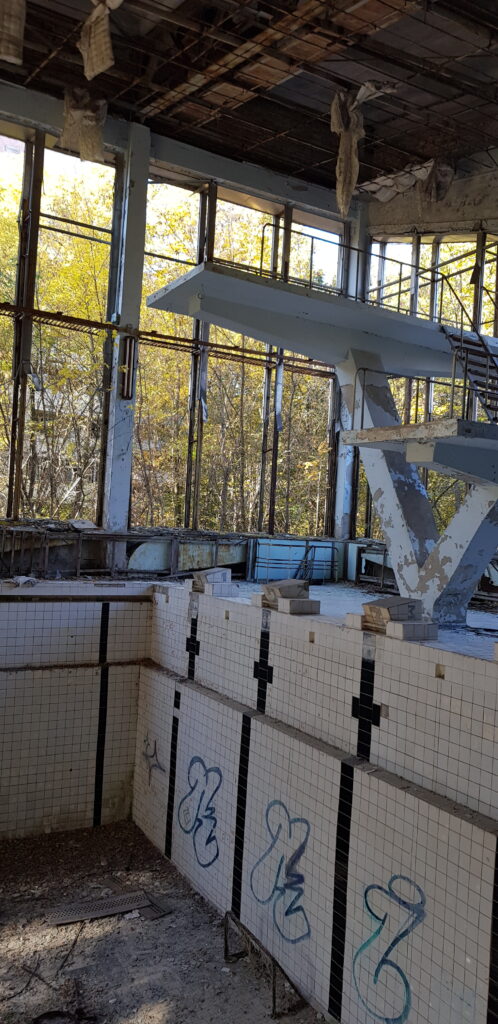
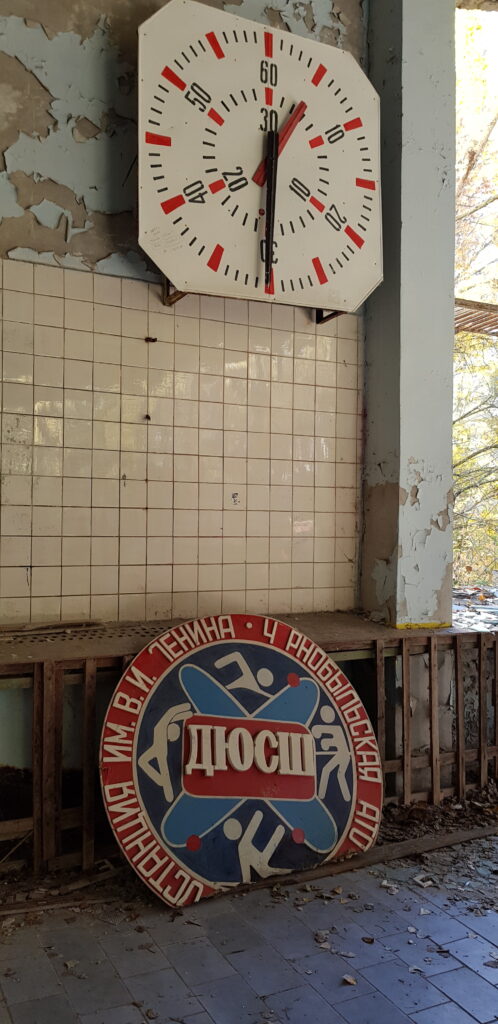
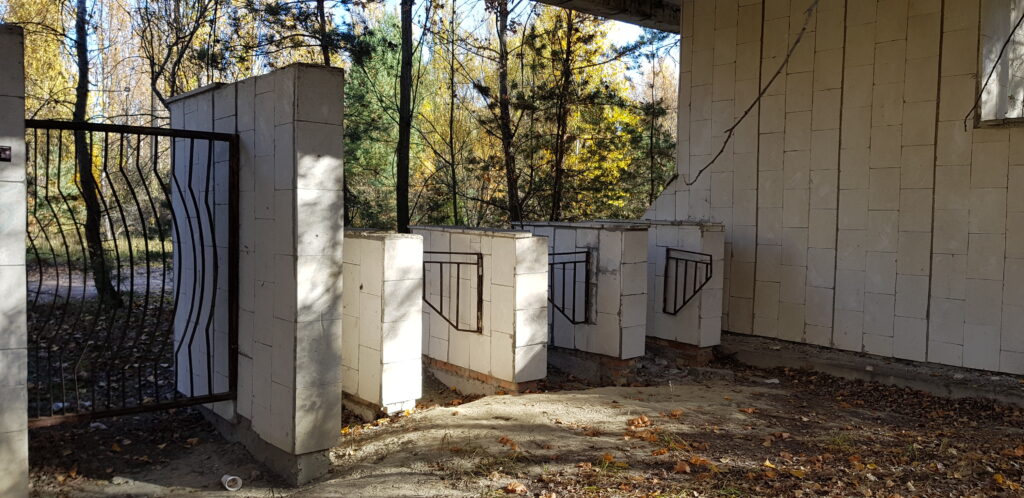
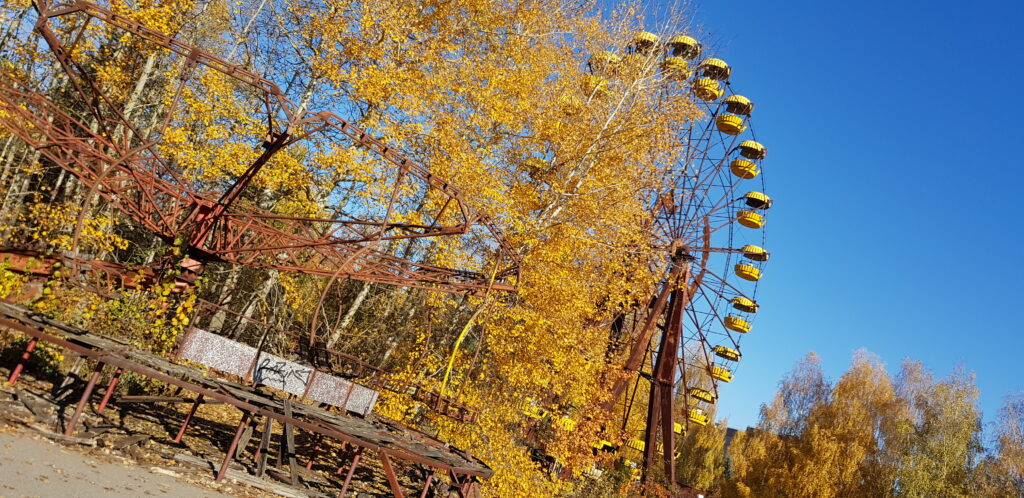
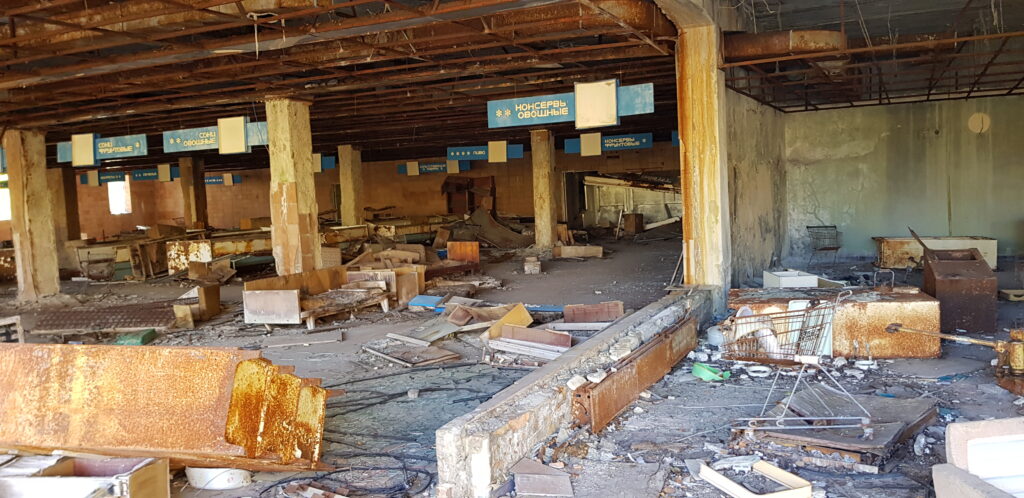
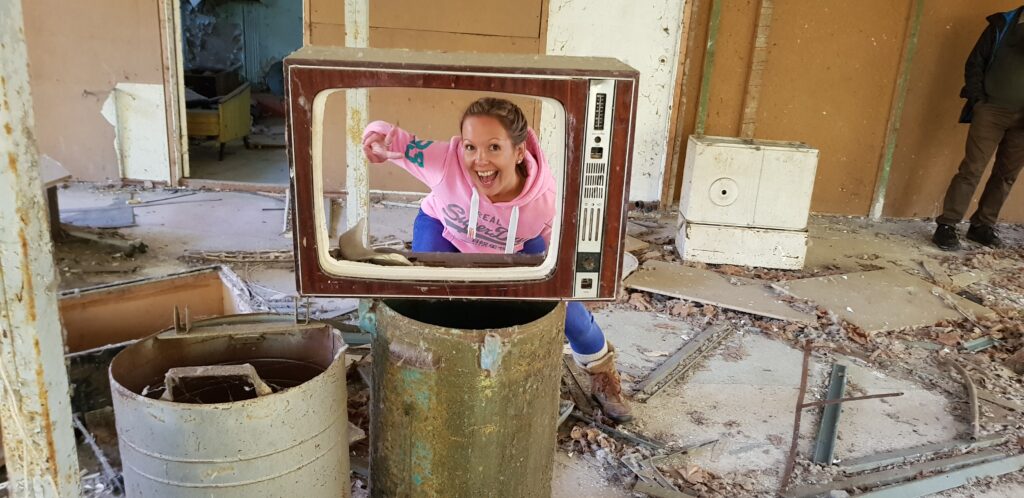
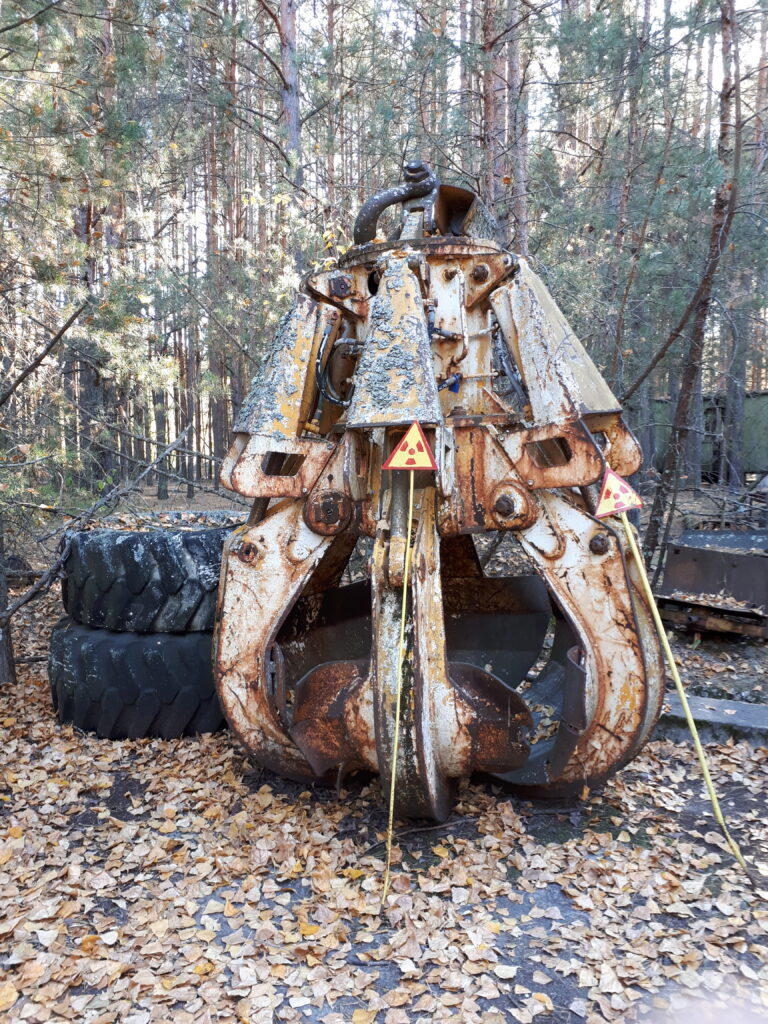
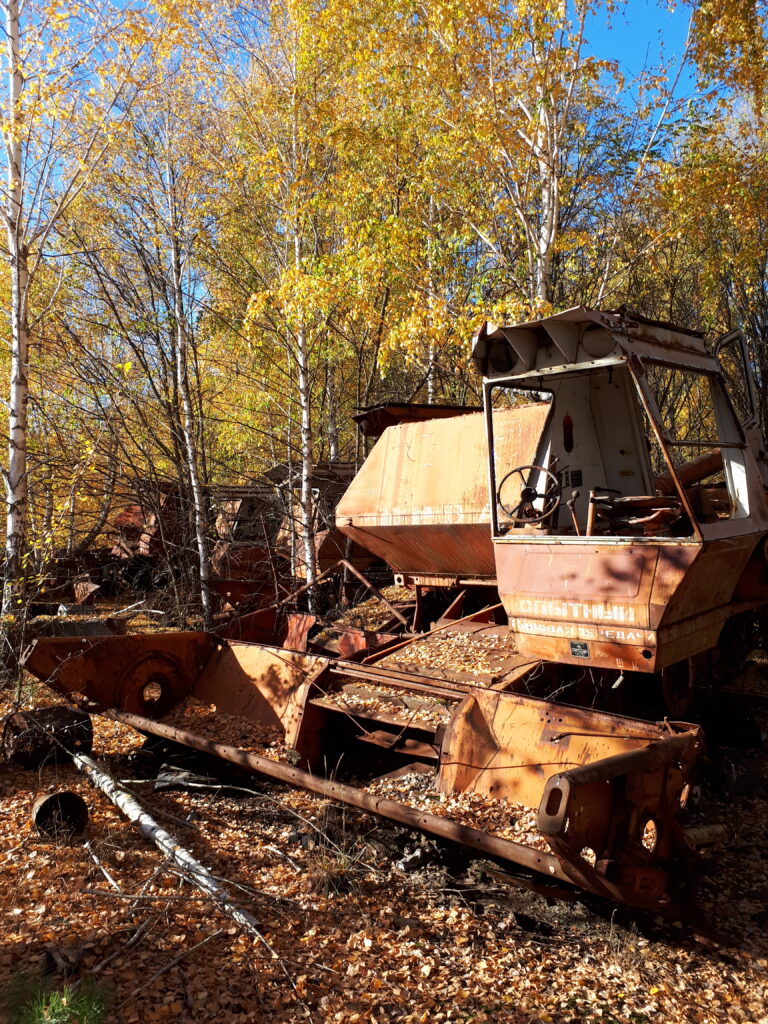
Arriving back at Kyiv early evening gave us a chance to take some pictures of the amazing architecture. We saw the ‘People’s Friendship Arch’. This ironically was designed to celebrate the closeness of the Ukrainian and Russian people – the sculpture of the Ukrainian and Russian workers under the arch was removed following the start of Russia’s war on Ukraine in 2022 but the arch itself remains. After a walk we had some food (and cocktails of course) before going back to the hotel. It had been an amazing couple of days exploring the Chernobyl exclusion zone so we needed a bit of a rest before focussing on Kyiv!
day four – exploring Kyiv
We had a slightly more leisurely day on day four. We set off from our hotel in the Teatralna area and started our own self-guided, Google Maps inspired walking tour.
Golden Gate
A replica of the 11th Century fortified main entrance to the fortified city.
St. Sophia Cathedral and Sophia Square
St. Sophia in Kyiv is a Christian Cathedral in the centre of Kyiv. It is a monument of Ukrainian architecture and monumental painting of the second decade of the 11th century (1011–1018). It is one of the few surviving buildings of the Kyivan Rus’ time. And one of the most important Christian shrines in Western Europe; the historical centre of Kyiv Metropolis.
St. Michael’s Golden-Domed Cathedral
The gold and blue of St Michael’s Cathedral could almost be confused for the national colours of Ukraine. It’s a stunning building and even on an overcast day the blue seemed to pop and the gold shone! This is the second iteration of the cathedral which was completed in May 2000. The original was built in 1108 and was destroyed by the Soviets in 1930 for having ‘no historical value’.
Princess Olga Monument Princess Olga was the first Ukrainian ruler to be baptised. She is the patron saint of widows and converts – due to her being both!
Ministry of Foreign Affairs of Ukraine
This was a spectacular building – nothing too exciting in terms of our trip apart from that…an awesome looking building that we took a picture of!!
Independence Square
Known to locals as Maidan (which means square or open space in Ukrainian). This has been the traditional place for political rallies since the start of Ukraine’s independence movement. It was officially named in 1991 following Ukraine’s Declaration of Independence.
Monument to the Participants of the January Armed Uprising of 1918
In Mariyinsky Park, this monument was actually dismantled in 2023 as part of the decolonisation process.
Mariyinsky Palace
This Baroque palace was opened in 1752 and is the official residence of the President of Ukraine. Recently renovated, the palace is open to the public for guided tours as well as being used to host visiting foreign dignitaries.
Dynamo Stadium
The Lobanovskyi Dynamo Stadium is the home of Dynamo Kyiv, opened in 1934 and holding just under 17,000 people. Dynamo were absolutely class in the 90’s with Serhiy Rebrov supporting one time Ballon D’Or winner Andrei Shevchenko who must be the most famous Ukrainian footballer ever!
Park of Eternal Glory
The 27-meter-high monument of the Tomb of the Unknown Soldier is a granite obelisk and is accompanied by an eternal flame. This monument is to commemorate the fight of Ukrainians against invaders during World War II.
Memorial in Commemoration of the Holodomor Genocide
The Great Famine of 1932-1933 is another name for the Holodomor which is a word made up of the Ukrainian words for hunger (holod) and extermination (mor). This entirely man made famine came from Joseph Stalin’s decision to force peasants to relinquish their land to collective farms in order to strip them of the economic power they would have otherwise had as land and property owners. This process of collectivisation lead to a drop in production and food shortages. It also lead to a series of peasant rebellions, particularly in Ukraine.
In order to get the peasants to submit, and to supress the idea of Ukrainians building an independent state, whole towns were placed on blacklists and prevented from receiving food and peasants were forbidden from leaving the Ukrainian Republic in search of food (effectively locking 22.4 million people in an area with minimal food supplies). Things got even worse in the winter of 1932-33 when the rebelling Ukrainian peasants, who were starving and already being refused food aid, had their houses ransacked by the police and members of the communist party who took everything edible – including pets. The result of the campaign to bring the rebellion under control was devastating. Possibly over 10 million people died of hunger across the USSR between 1931 and 1934 with millions of Ukrainians losing their lives.
The Soviet Union forbade discussion of the Holodomor and took measure to erase this act of genocide from history. They even withheld the 1937 census as it showed how much Ukraine’s population had been decimated. It wasn’t until Ukraine gained independence that the ban on talking about the Holodomor was lifted.
Kyiv-Pechersk Lavra
Also known as the Kyivan Caves Monastery this was an amazing place – the colour both inside and outside was remarkable! It is the first and most ancient monastery on the territory of contemporary Ukraine and is spread over a 20-hectare site. There are a variety of surface and underground structures.
National Museum of the History of Ukraine in the Second World War and the Flame of the Glory Bowl
We spent some time looking at the outside exhibition of military vehicles and weapons here. The memorial complex depicting the battles that the Soviet soldiers endured to protect their borders was particularly impressive.

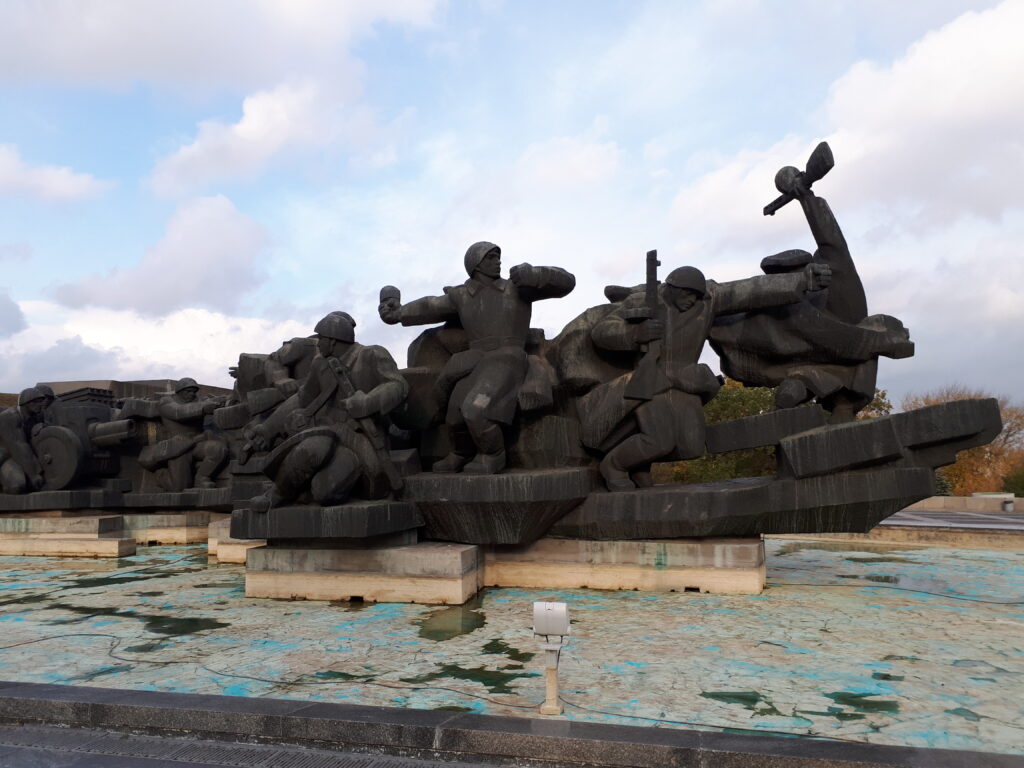
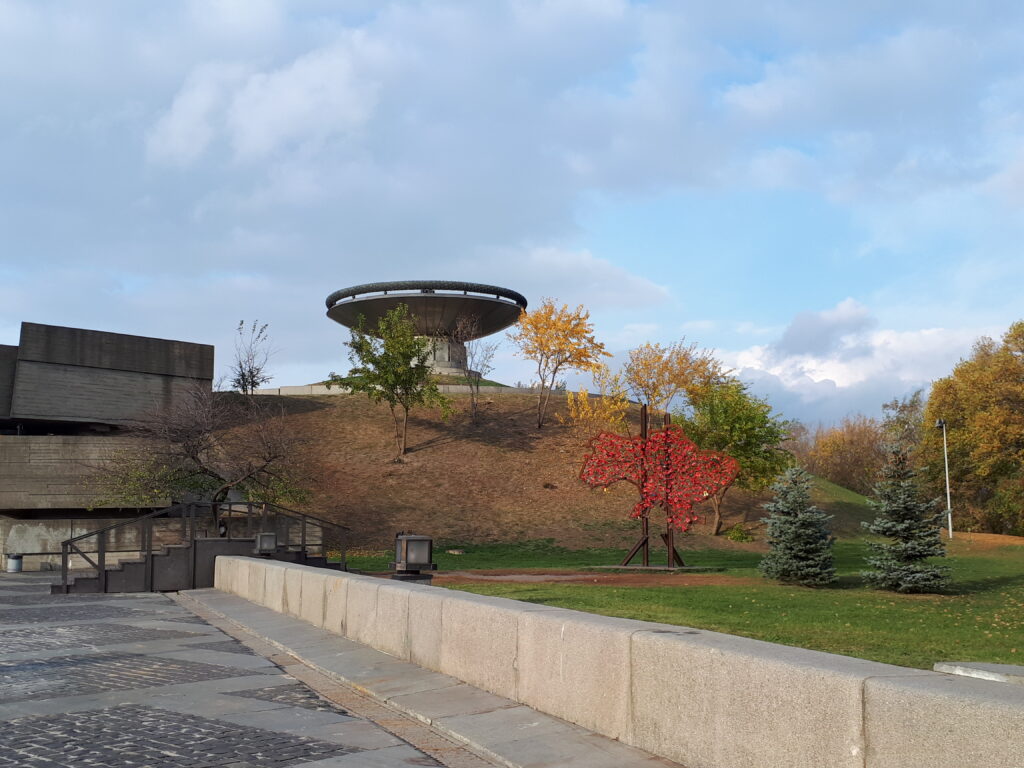
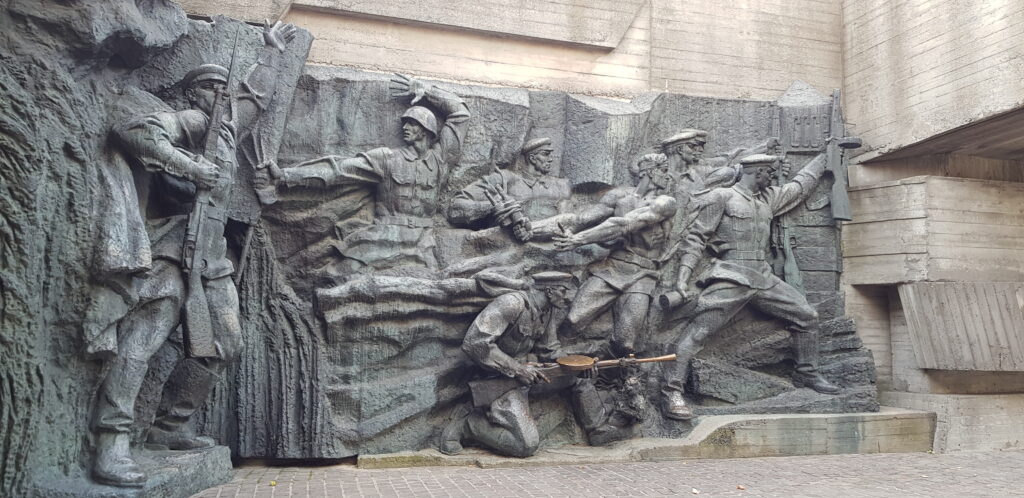
Ukrainian Motherland Monument
This 62m tall Mother Ukraine statue is one of the best-known landmarks in Kyiv. Originally designed to celebrate the resilience of Ukrainian soldiers in WW2, the hammer and sickle of the Soviet Union was removed in 2023 and replaced with the Ukrainian crest.
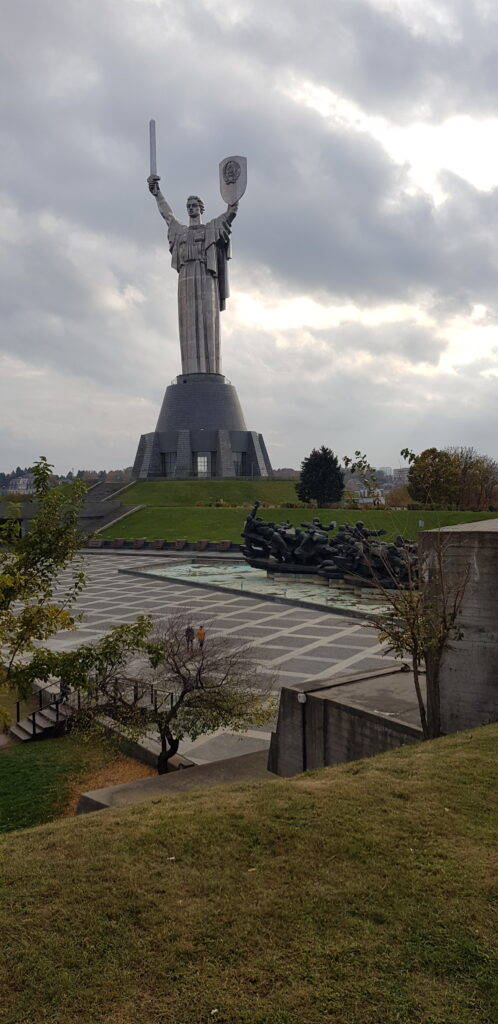
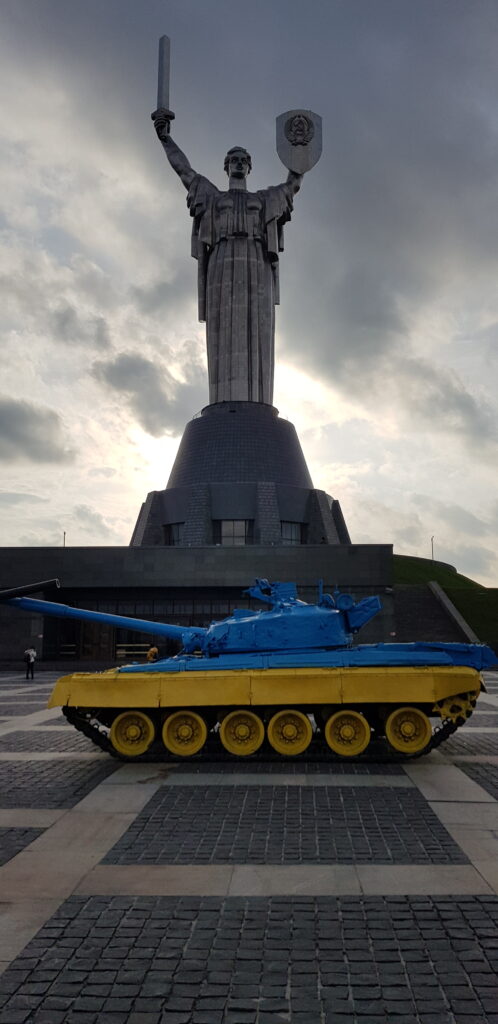
After a day of walking we went back to the hotel, got changed and headed out to the National Opera of Ukraine to see the ballet. This was something that Gill had really wanted to do for a while. As mentioned before, Ukrainian was the furthest away from any language that we had ever heard but we still managed to follow the storyline/plot of the ballet. The music and movement told more of a story than words ever could. Once finished we went back to the hotel, packed our bags and quickly fell asleep after another full day of exploring.
day five
The taxi ride from central Kyiv back to Boryspil airport really summed up what we had seen of Kyiv. Two worlds colliding! We saw giant (maybe 15-20 storey) Soviet era concrete apartment blocks next to brand new, mainly glass, modern skyscrapers that wouldn’t look out of place in any western capital city. The two styles so close to each other in terms of location but decades apart in terms of ideology. Here was a capital city complete with McDonalds, Burger King and KFC built around the Soviet buildings. The shackles of communism have been removed and the city/country is trying its best to flourish but this has led to conflict, possibly fuelled by jealousy.
Ukraine was an absolutely brilliant trip. I’m glad we got to see it before the horrors of the last couple of years and really hope that the Ukrainians manage to keep hold of as much of their beautiful country as they are able to. I think the main message that became apparent from our time here was how adaptable the Ukrainian people have had to be/are and hopefully they will be able to successfully adapt again!
Sources for some of the information mentioned are as follows –

